Pulse the Magazine of Texas Tech University Health Sciences Center

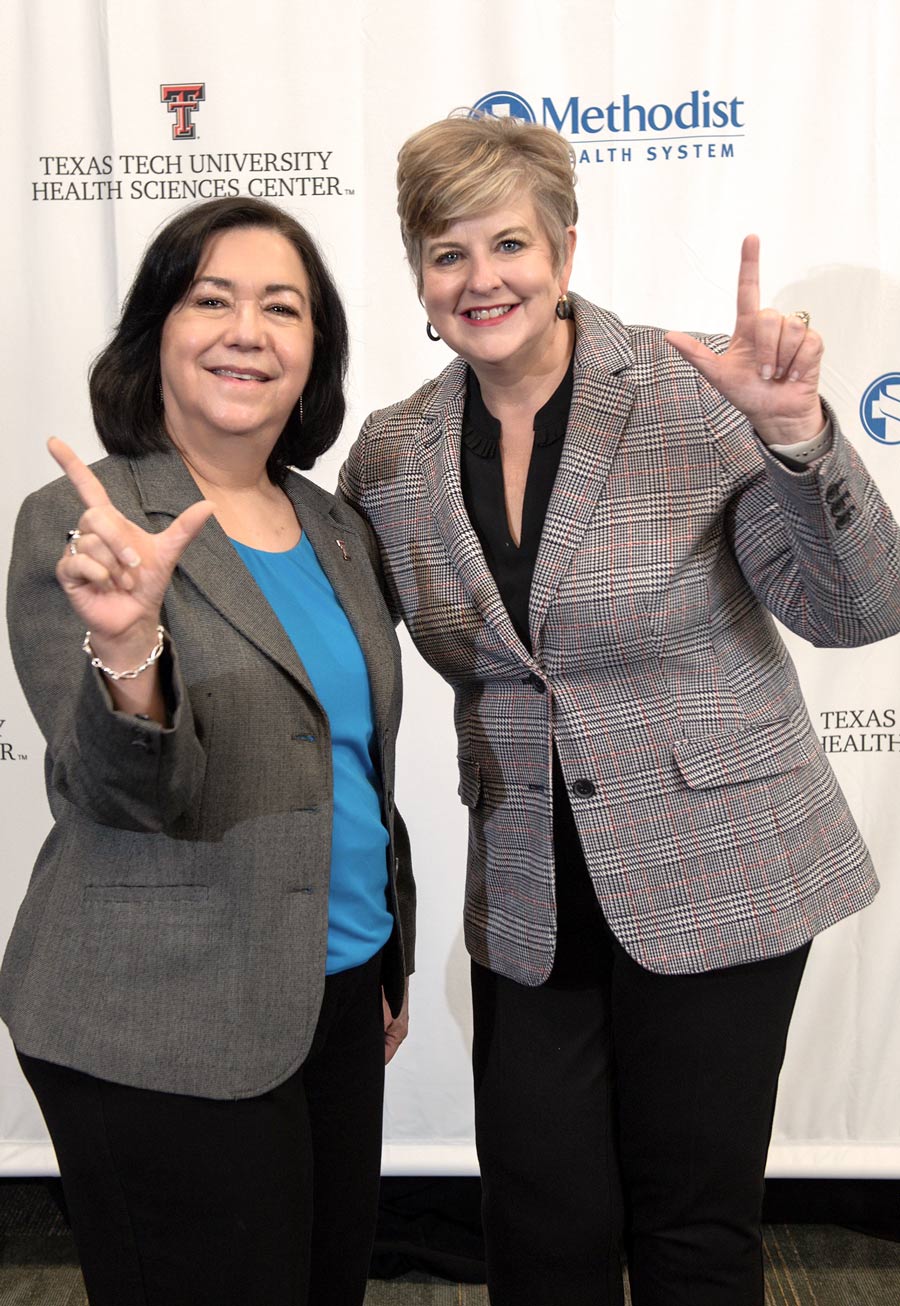
Alumna Collaborates to Transform Health Care
When Frasier began her advanced nursing degree at TTUHSC two years ago, she experienced the Baader-Meinhof phenomenon — a sudden awareness of encountering something with which you notice as familiar. (Like when you buy a white car and then seemingly see more white cars than you did before.) Frasier began to take notice of the Double T’s proudly displayed on vehicles in Mansfield Methodist’s parking lot and throughout the city. She thought, Why don’t we grow our own nurse workforce?
Editor’s Note
His email arrived just as I learned of TTUHSC hiring John Norbury, MD, our first PM&R residency program director, who began duties in early July. Turns out, Grant and Norbury know one another, but have not kept in touch. We were able to connect the two, and Grant offered his support as Norbury builds out his team at TTUHSC. Connecting our alumni to the university is one of our goals for publishing this magazine.
Keep sharing your stories!
I then turned my attention to Kara Bishop’s article on the future of telemedicine. My interest in telemedicine is partly based on my family history. My maternal grandfather delivered me in the small wheat growing community in north central Oklahoma where my mother was born and raised. I have been concerned as more and more rural hospitals close or reduce their operations. It is encouraging to know that TTUHSC is going to be on the leading edge of addressing rural health needs through the advancement of telemedicine.
Finally, I was gladdened to see the page on how TTUHSC is giving opportunities to America’s veterans who were involved as medics during their military service. Their military experience and the accelerated training in the Veteran to Bachelor of Science in Nursing will make tremendous strides in treating the physical and emotional injuries that many of our returning veterans have experienced.
In summary, keep up the great work being done at the Health Sciences Center.
Lubbock, Texas
“Silos, Politics and Turf Wars,” by Patrick Lencioni.
“Douglas McGregor, Revisited: Managing the Human Side of the Enterprise,” by Warren G. Bennis, Gary Heil and Deborah C. Stephens.
“Portraits of Courage: A Commander in Chief’s Tribute to America’s Warriors,” by George W. Bush.
Dallas, Texas
St. Louis, Missouri
Masthead

Danette Baker, MA
Kara Bishop
Jim Nissen
TR Castillo, Suzanna Cisneros, Jason Collin, Carolyn Cruz, Mercedes deBellard, Kate Gollahon, Terry Greenberg, Mark Hendricks, Neal Hinkle, Kami Hunt, Sarah Maxwell, Sean McCabe, Jordan Pape, Landry Shayne Photography, Chriselda Reyes, Marcus Rubio, Melissa Whitfield, Glenys Young
Lori Rice-Spearman, PhD
(Health Professions ‘86)
Ashley Hamm
Mattie Been, Amarillo
Jessica Zuniga, Permian Basin
Institutional Advancement
Mandy Hanousek
Cyndy Morris
Kevin Friemel, Smiley Garcia, Kendalyn Rising, Clifford Wilkes
pulse@ttuhsc.edu
TTUHSC External Relations
3601 Fourth Street STOP 6242
Lubbock, TX 79430-6242
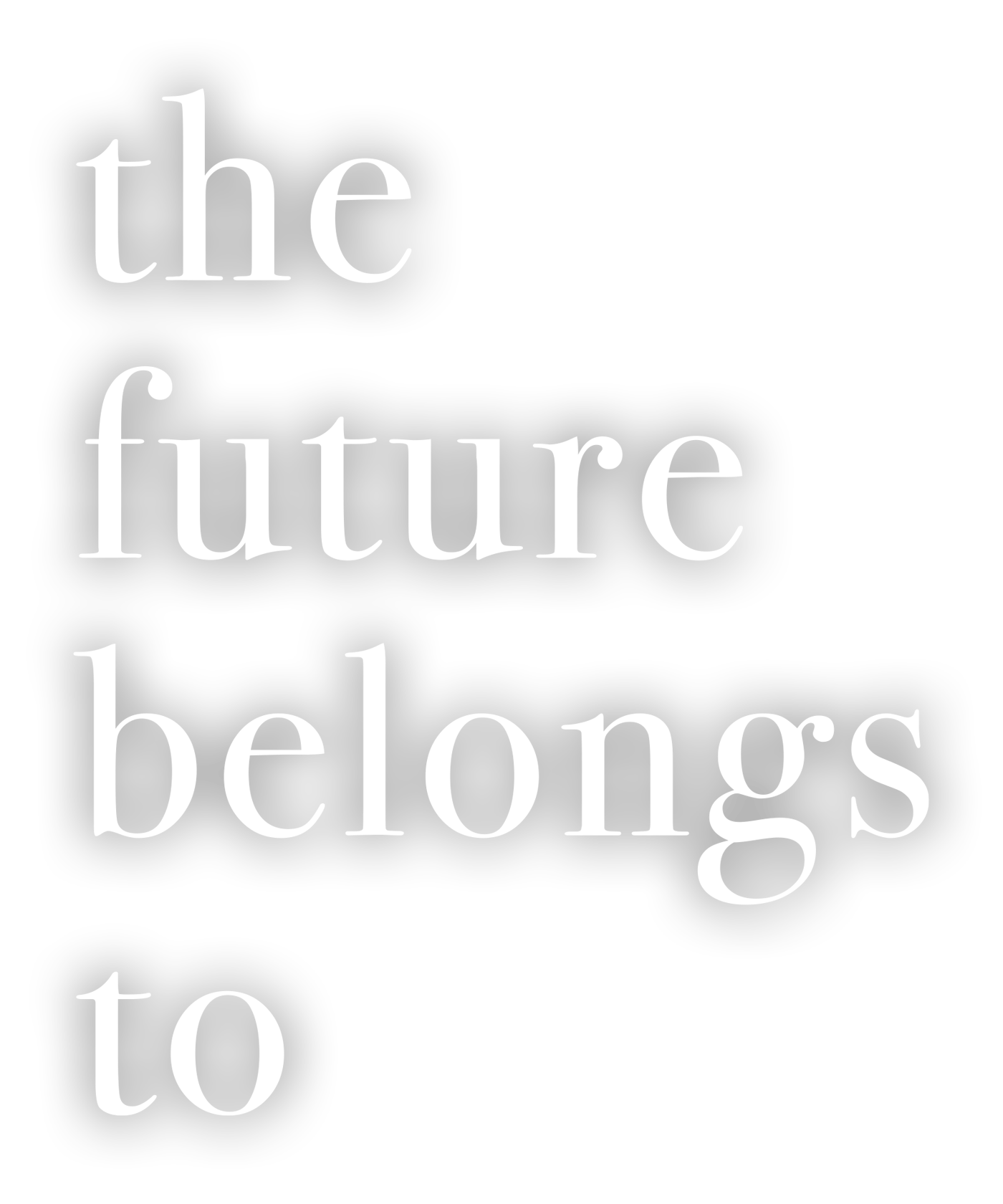
Bachelor of Science in Clinical Laboratory Science
Second Degree Bachelor of Science in Clinical Laboratory Science
Post-Bavvalaureate Certificate in Clinical Laboratory Science
Master of Science in Molecular Pathology
Master of Physician Assistant Studies
Rehabilitation Sciences
Master of Athletic Training
Master of Occupational Therapy
Doctor of Occupational Therapy
Post-Professional Doctor of Occupational Therapy
Doctor of Physical Therapy
Doctor of Science in Physical Therapy
Doctor of Philosophy in Rehabilitation Science
Concentration in Communication Sciences Disorder
Concentration in Movement Sciences Disorder
Speech, Language & Hearing Sciences
Doctor of Audiology
Bachelor of Science in Speech, Language, and Hearing Sciences
Second Degree Bachelor of Science in Speech, Language, and Hearing Sciences
Master if Science in Speech-Language Pathology
Healthcare Management & Leadership
Bachelor of Science in Healthcare Management
Master of Science in Healthcare Administration
Graduate Certificate in Health Informatics and Data Analysis
Graduate Certificate in Health Systems Policy and Management
Graduate Certificate in Healthcare Finance and Economics
Graduate Certificate in Health Systems Engineering and Management
Graduate Certificate in Long Term Care Administration
Clinical Counseling & Mental Health
Master of Science in Addiction Counseling
Master of Science in Clinical Mental Health Counseling
Master of Science in Clinical Rehabilitation Counseling


Bachelor of Science in Clinical Laboratory Science
Second Degree Bachelor of Science in Clinical Laboratory Science
Post-Bavvalaureate Certificate in Clinical Laboratory Science
Master of Science in Molecular Pathology
Master of Physician Assistant Studies
Rehabilitation Sciences
Master of Athletic Training
Master of Occupational Therapy
Doctor of Occupational Therapy
Post-Professional Doctor of Occupational Therapy
Doctor of Physical Therapy
Doctor of Science in Physical Therapy
Doctor of Philosophy in Rehabilitation Science
Concentration in Communication Sciences Disorder
Concentration in Movement Sciences Disorder
Speech, Language & Hearing Sciences
Doctor of Audiology
Bachelor of Science in Speech, Language, and Hearing Sciences
Second Degree Bachelor of Science in Speech, Language, and Hearing Sciences
Master if Science in Speech-Language Pathology
Healthcare Management & Leadership
Bachelor of Science in Healthcare Management
Master of Science in Healthcare Administration
Graduate Certificate in Health Informatics and Data Analysis
Graduate Certificate in Health Systems Policy and Management
Graduate Certificate in Healthcare Finance and Economics
Graduate Certificate in Health Systems Engineering and Management
Graduate Certificate in Long Term Care Administration
Clinical Counseling & Mental Health
Master of Science in Addiction Counseling
Master of Science in Clinical Mental Health Counseling
Master of Science in Clinical Rehabilitation Counseling
Got Slime(d)?
Students donated money to vote for the professor and student officer they wanted slimed. The winner? Mekenzie Monroe, who’s pictured getting slimed by Moumita Choudhury, AuD, CCC-A, assistant professor in the School of Health Professions Department of Speech, Language and Hearing Sciences.
 TTUHSC Together
TTUHSC Together
A Place where you belong
I Heard That!
– Luis Castro, second-year medical student and Latino Medical Student Association vice president, discusses outreach initiatives to educate the Hispanic community on vaccinations.
– Tracee Bentley, president and chief executive officer for Permian Strategic Partnership, a community partner for the $30 million School of Health Professions Physician Assistant Program expansion in Midland, Texas.
– Steven Philip, PharmD, (Pharmacy ’21) graduated on the same day as his sister, Stacy Philip, MD, (Medicine ’21).
Raquel Baron, MD/MPH student, on founding the online community, Type One Together.
 FACULTY PROFILE
FACULTY PROFILEAmerican Dream Becomes Reality
Assistant professor, Jerry H. Hodge School of Pharmacy Department of Pharmacy Practice/Ambulatory Care Division
Growing up in Nigeria, Adebola Akunna, PharmD, MPH, BCPS, would count the days until her uncle returned home during semester breaks while in medical school at the University of Ibadan. She, too, wanted to become a doctor someday, never questioning her passion for health care and service to others. Akunna believed it was what she was born to do.
Her family moved from Ifako-Ijaiye Local Government in Nigeria to the Washington, D.C.-Maryland area when Akunna was 15 years old. From a young age, she heard many Nigerians state that America was the “land flowing with milk and honey,” so she was slightly disappointed when she arrived. “I thought I would see a lot of milk flowing everywhere,” she added, laughing.
Akunna’s interest in health care shifted to pharmacy while pursuing her undergraduate degree; while it never occurred to her to enter academia, colleagues in her pharmacy residency thought she was the ideal candidate. “I enjoyed working with students and was passionate about education, which was something my father instilled in me during childhood.”
During residency, she learned about TTUHSC from fellow residents and now had a new objective in her sights. “I really valued mentorship and knew I would need good leaders starting out as a faculty member,” she said. “I always tell my students that I basically stalked Lisa Chastain (associate professor, division head, Ambulatory Care) by email, and it must have worked because she called me.”
Akunna had even accepted an offer to work for another university, but she turned it down for the position at the Jerry H. Hodge School of Pharmacy in Dallas.
“My family sacrificed so much for me to become who I am, I wasn’t about to disappoint them by not taking this opportunity.”
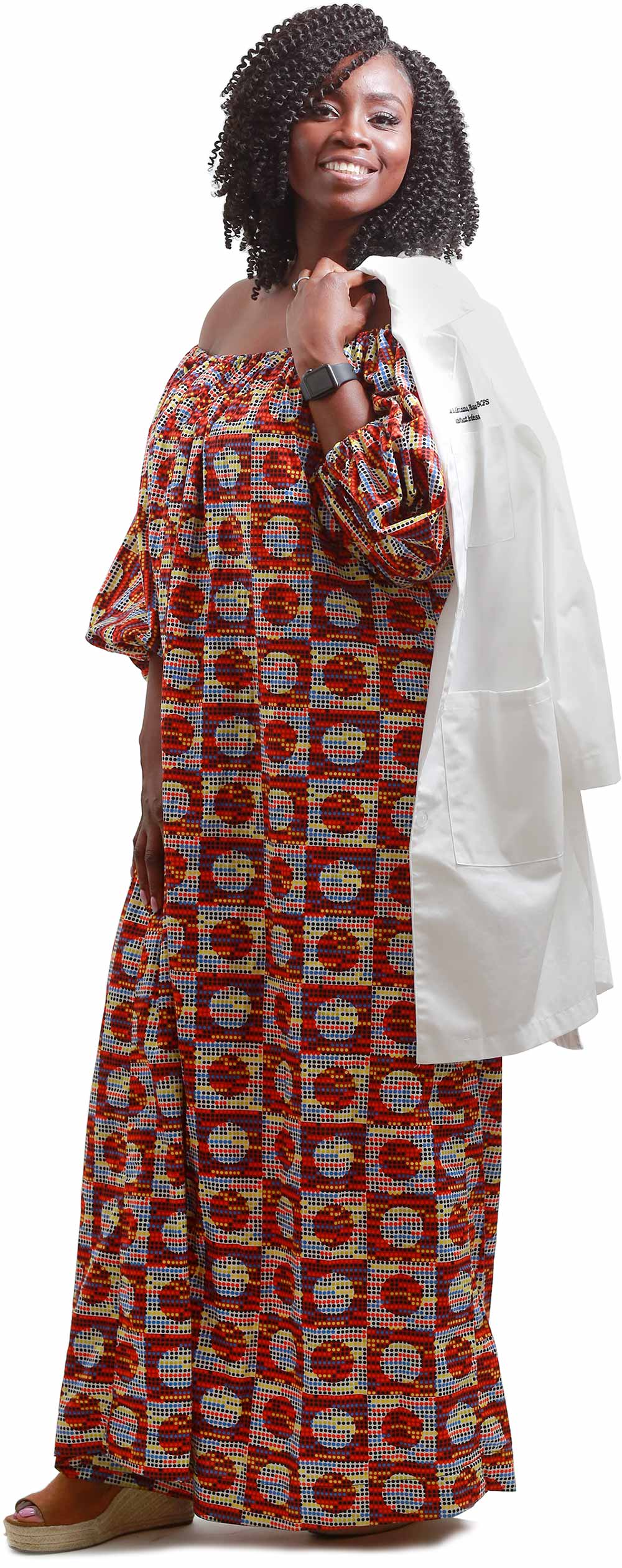
 for the record
for the recordStat!
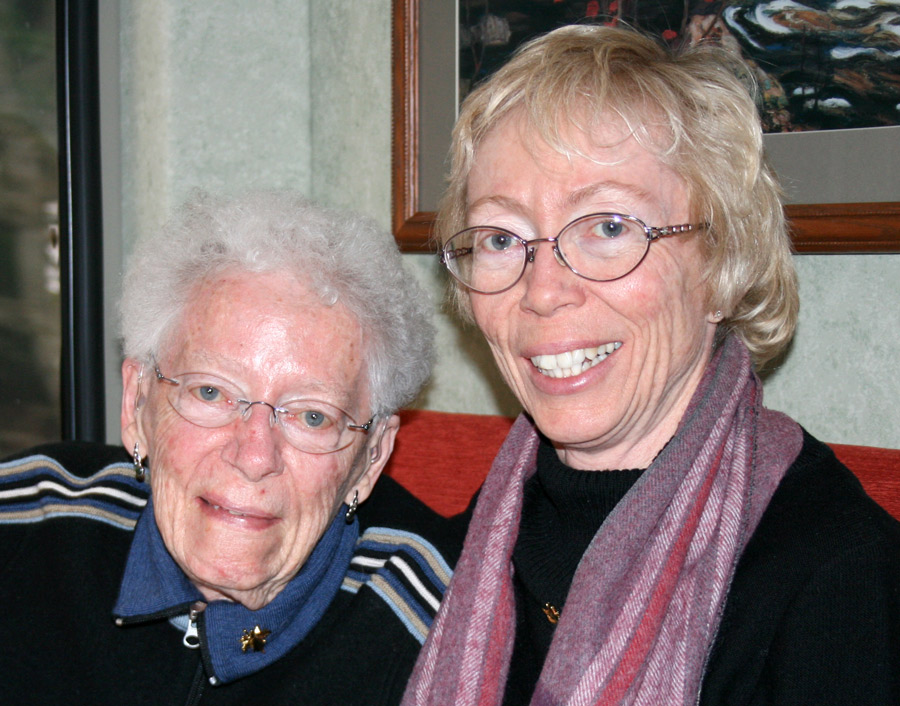
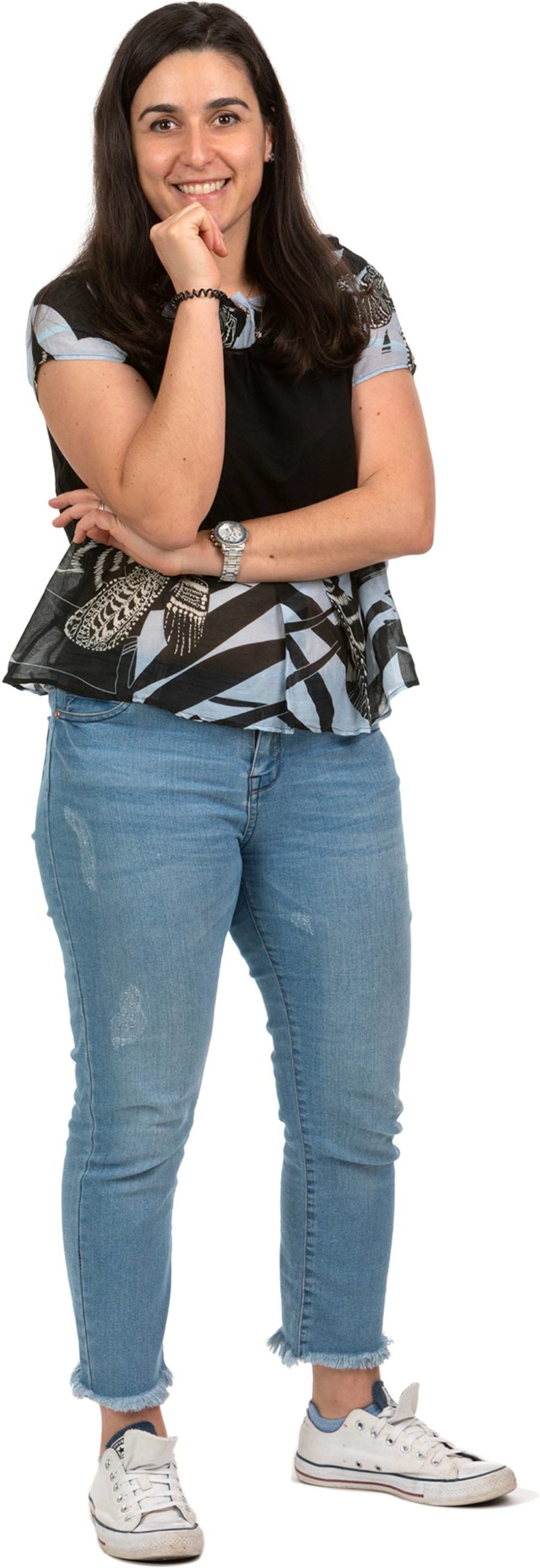



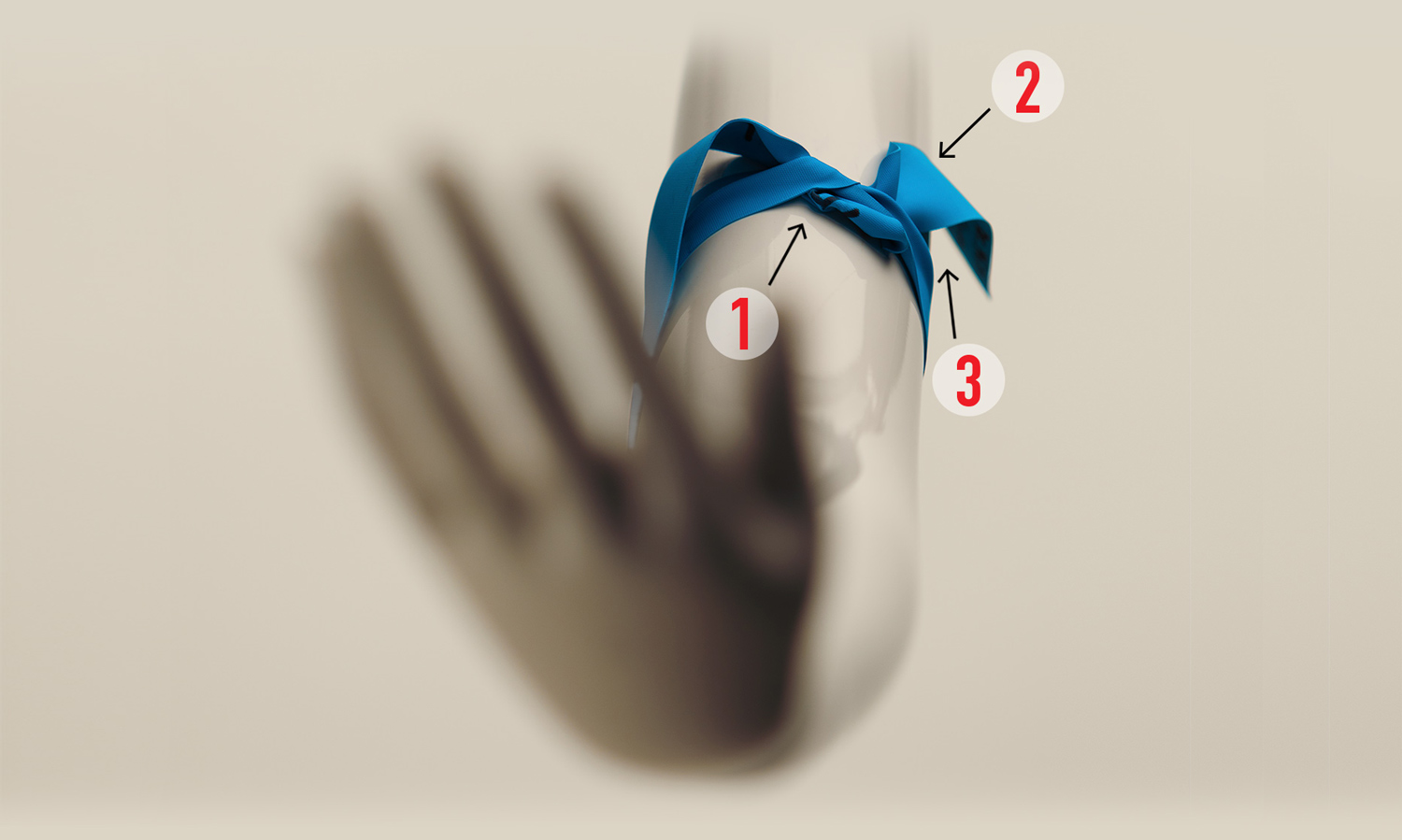
Blood, Sweat and Tourniquets
While Carson Dickson attempts her first IV stick, the vein blows. She looks at the attending nurse, who instructs her to remove the tourniquet and switch arms. Dickson breathes a sigh of relief as the rich crimson liquid flows into the syringe. It’s over — now she’s confident she can do it again.
1
Tourniquets are premeasured into 18-inch rubber bands and come in multiple colors. Typically, one tourniquet is used per patient.
2
Nursing students conduct their first intravenous needle sticks and blood draws during their first clinical rotation.
3
After TTUHSC nursing students successfully make their first sticks, their professors sign and date their tourniquets. Students often post selfies celebrating their first successful procedure, saving their tourniquet for decades — some even place them in shadowboxes for safekeeping.
1
Tourniquets are premeasured into 18-inch rubber bands and come in multiple colors. Typically, one tourniquet is used per patient.
2
Nursing students conduct their first intravenous needle sticks and blood draws during their first clinical rotation.
3
After TTUHSC nursing students successfully make their first sticks, their professors sign and date their tourniquets. Students often post selfies celebrating their first successful procedure, saving their tourniquet for decades — some even place them in shadowboxes for safekeeping.
Blood, Sweat and Tourniquets
While Carson Dickson attempts her first IV stick, the vein blows. She looks at the attending nurse, who instructs her to remove the tourniquet and switch arms. Dickson breathes a sigh of relief as the rich crimson liquid flows into the syringe. It’s over — now she’s confident she can do it again.
 School of Nursing
School of NursingAngel of Mercy
Suddenly, the noise of the truck is overpowered by the deafening sound of an explosion. Panic stricken, Nick looks up to see a huge mushroom cloud of fire and black smoke billowing upward.
 School of Nursing
School of NursingRole Call
The Builder
Teddy Jones, PhD, RN
Founding Dean: 1979-1992
“Creating a new school gave us the opportunity to create all the particulars like curriculum and continuing education, while also celebrating many firsts: classes admitted, honor society and accreditation, instilling pride in faculty and students.”
The Expander
Patricia Yoder-Wise, EdD, RN,
Interim Dean: 1991-1993
Dean: 1993-2000
“Diversity is the starting point for everyone to feel they are part of a bigger whole, and we have to have that view to be successful as nursing professionals and as the providers of exquisite care.”
The Innovator
Alexia Green, PhD, RN
Dean: 2000-2010
“Our team’s focus on innovation became the state’s incubator for the use of distance education to build online programs that were high quality. We were one of the first schools in the state to leverage technology through distance learning.”
The Increaser
Michael Evans, PhD, RN
Dean: 2012-present
“ We’re on the cutting edge, not steeped in tradition, but progressively working to enhance the quality of our education. We are aware of our opportunities and our responsibilities during a tremendous nursing shortage.”
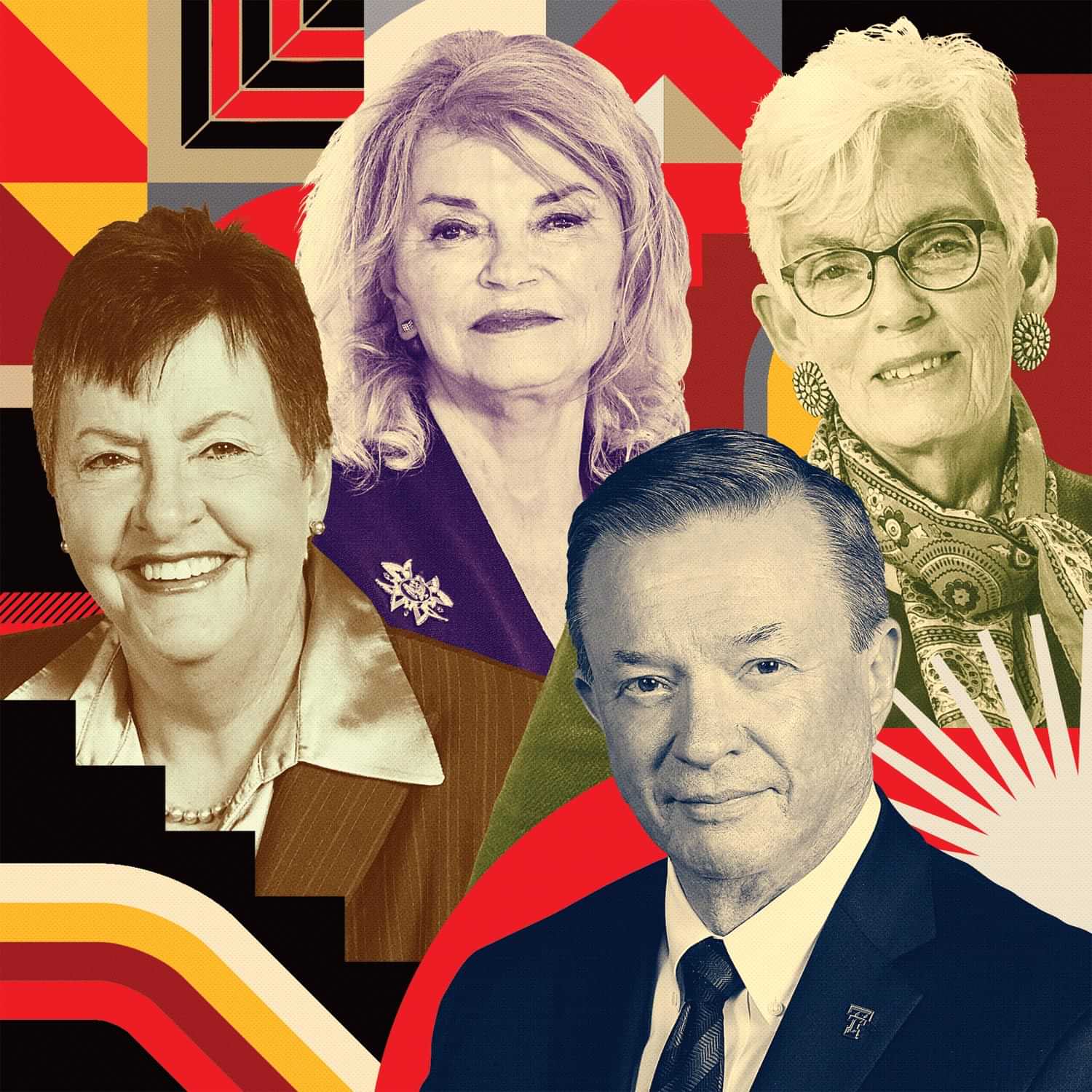
Yondell Masten, PhD, RNC-OB, not pictured, served as interim dean from 2010-2012.
Compassionate Competence
faculty member since 1986
 School of Medicine
School of MedicineIn Good Hands
She’s in a coma. He closes his eyes, trying to breathe through the burning numbness. Both suffer the pain of having lost the body’s most versatile tool: the hand.
The paramedic team find themselves on two separate missions: save the woman’s life and save her hand — the right one severed from the wrist by shrapnel.
The last thing he remembers is lifting his left hand, seeing nothing but bone and crying out, “Oh sh*t, I’m dying,” as his co-workers wait for the ambulance to arrive. Both hands are crushed, skin is in tatters.
Texas Tech Physicians Hand Clinic
Both patients are taken to the hospital where a consult is ordered from the Texas Tech Physicians Hand Clinic in Lubbock. Brendan MacKay, MD, clinic director and orthopedic hand surgeon, presides over both cases.
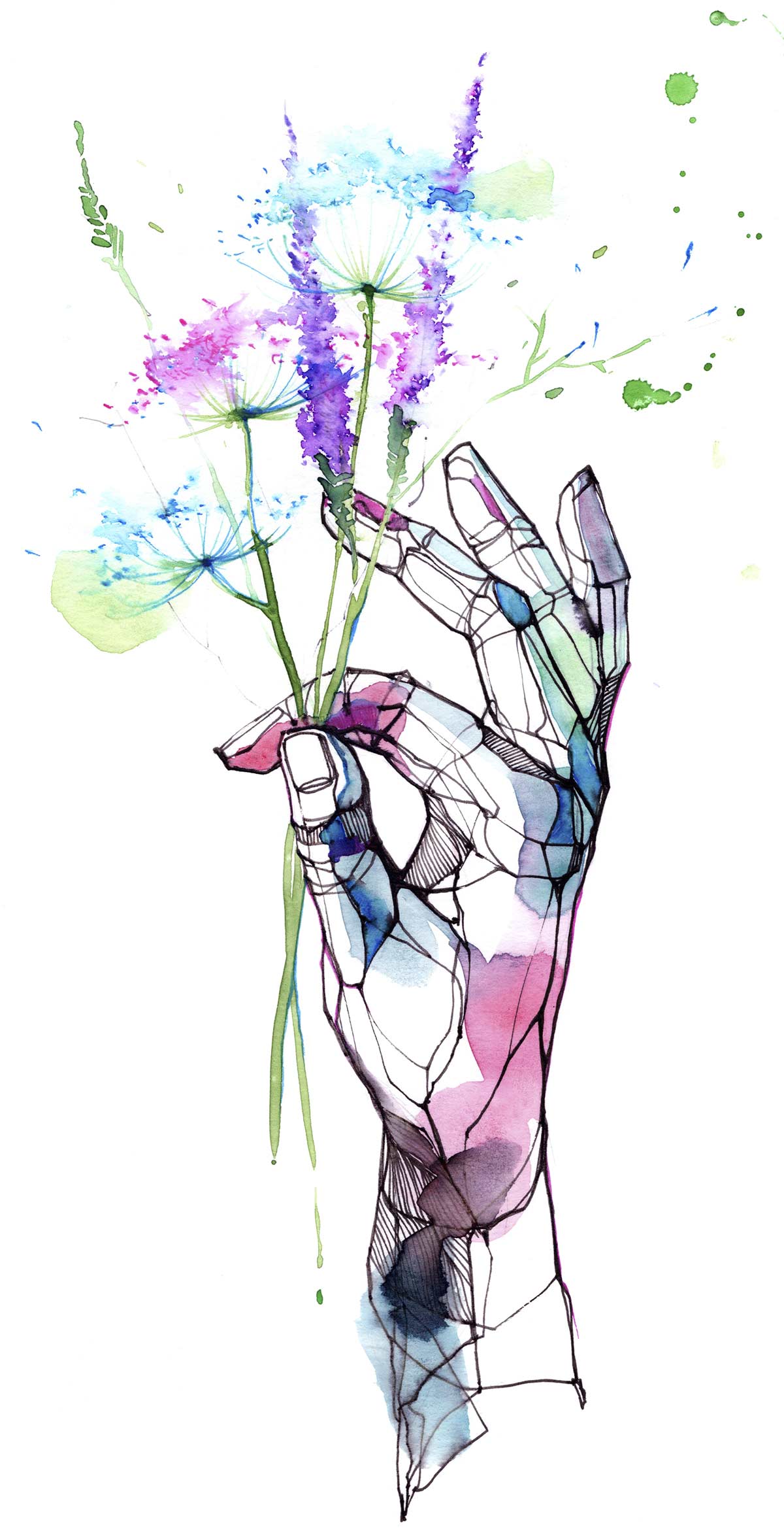
 School of Medicine
School of MedicineOut of Pocket Improvement
Fourth-year medical student Andrea Fowlé and Kelsey Walker, MD, (Resident ’21, Medicine ’18), teamed up to offer additional training support. With the help of Family and Community Medicine clerkship director, Franklyn Babb, MD, they created “Pocket Talks,” a series of flashcards to help students review before board examinations and in clinic.
Fowlé and her team identified challenging topics for students and residents to grasp in clinic and hospital service as well as the most important topics to learn when studying for board examinations. Each card addresses a prevalent health care condition, like cardiac arrest, asthma, diabetes management, etc., and contains information on evaluating and treating conditions — often including graphics or diagnostic charts.
Fowlé also conducted data-driven research proving the cards actually improved the comfort level among students and interns in evaluating, classifying and treating patients.
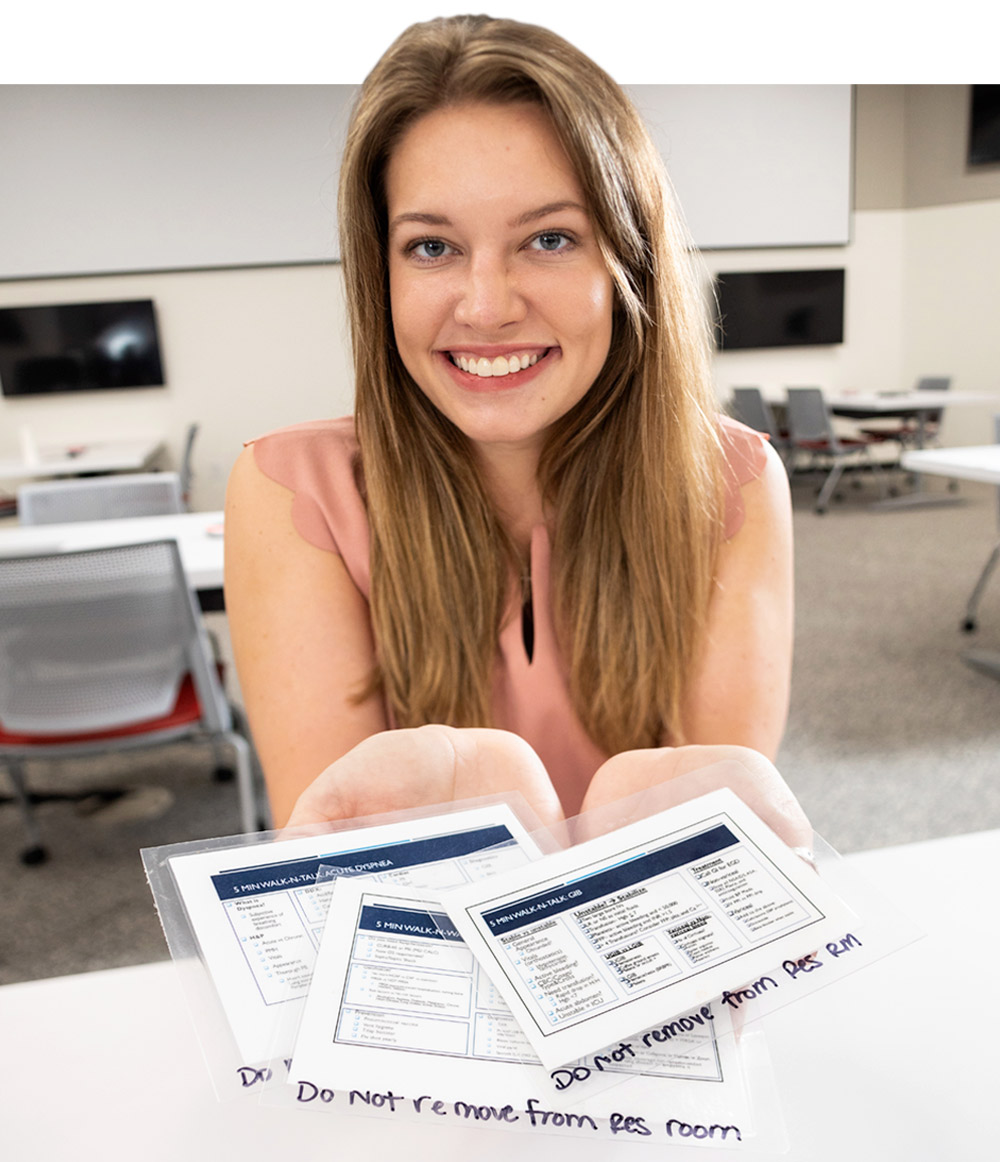
Med Students: Would You Like to Phone a Friend?
Two alumnae engage as physician development coaches, teaching students accountability and prioritizing their well-being.
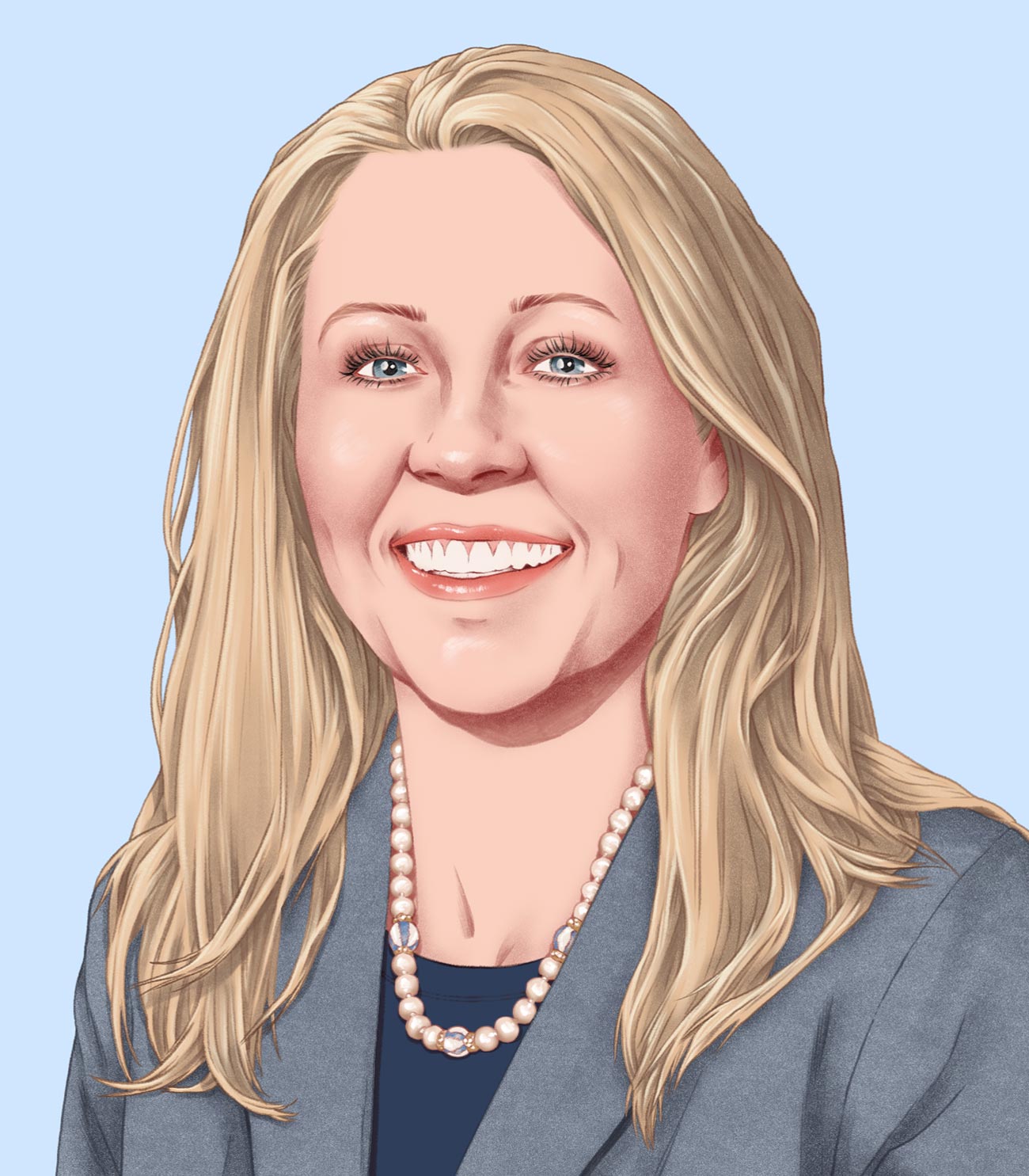
Physician Development Coach
TCU and UNTHSC School of Medicine
Fort Worth, Texas
ATKISSON: Coaches are physicians that are on faculty at the medical school, and we follow medical students throughout their four-year journey with us to provide support and help them solve problems, plan and use resources that benefit their physical and mental well-being.
What training did you go hrough?
ATKISSON: TCU and UNTHSC School of Medicine developed a training program for coaches. It’s a 120-hour program based upon the International Coaching Federation (ICF) curriculum. I have also earned my executive coach certification through ICF and coach physicians privately.
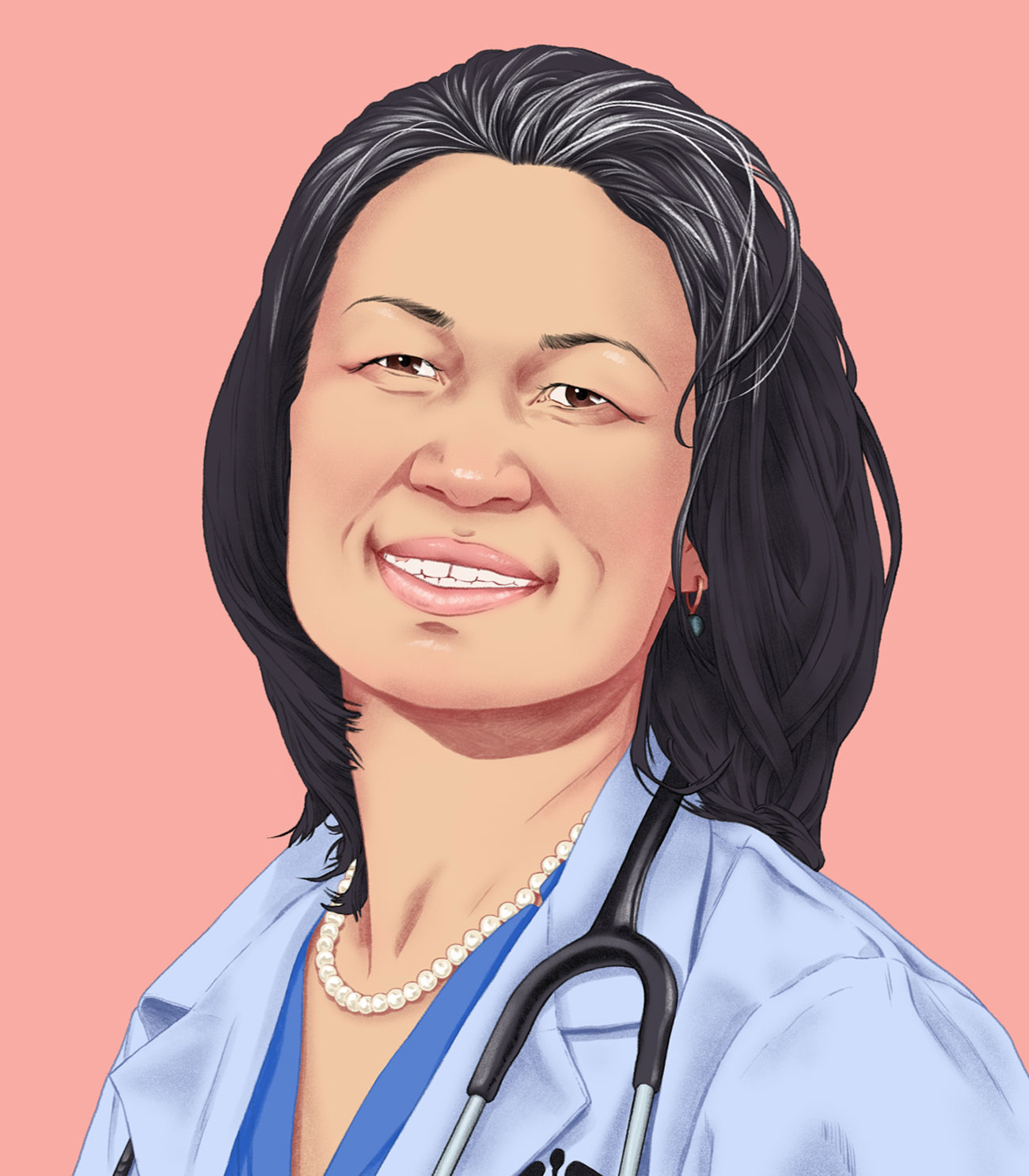
Physician Development Coach
TCU and UNTHSC School of Medicine
Fort Worth, Texas
NGUYEN: My love for mentoring students in high school, college and graduate school as an educator helped me naturally transition into this role. Coaching allows me to engage with students and help them learn how to develop solutions to their personal challenges.
What have you learned from your time as a coach?
NGUYEN: The value of listening and allowing the coaching conversations to flow naturally. Students develop trust when their coach expresses genuine desire to know them. Witnessing these students’ growth is a joyful experience.
 School of health Professions
School of health ProfessionsAcademic Achievements
After graduating with a degree in biological sciences, Sherry Keller, MS, MLS (ASCP), (Health Professions ’20) decided to pursue a career in clinical lab sciences. She enrolled in a one-year post-baccalaureate advanced certificate in clinical laboratory sciences through TTUHSC, moving into the Master of Science in Molecular Pathology program after completion.
“The certificate allowed me to sit for the Medical Laboratory Scientist board exam through the American Society for Clinical Pathology,” Keller added. “It also guaranteed me a clinical laboratory placement site for clinical rotations with a preceptor. My clinical experience plus the certificate and my master’s degree granted me a New York State Technologist License, which has strict clinical requirements.”
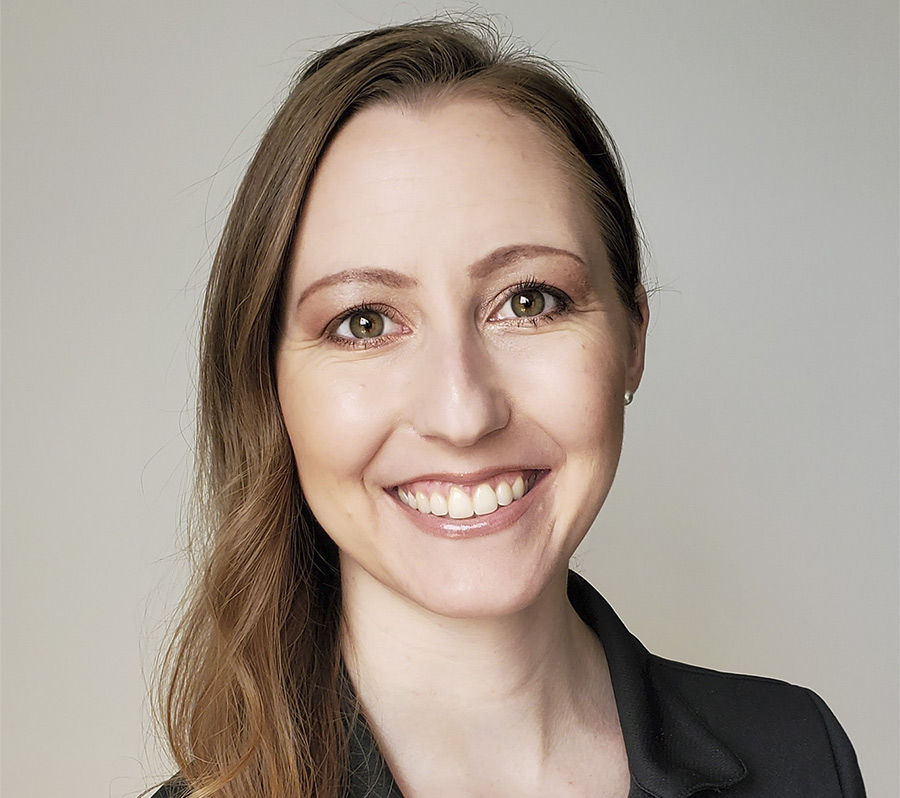
The Post-Professional Doctor of Occupational Therapy online degree program is designed for licensed occupational therapists who have earned a bachelor’s or master’s degree in occupational therapy and would like to pursue a doctorate.
Leilani Brown, OT, (Health Professions ’97) co-owner of the pediatric therapy and licensed home health agency, When Kids Play, finds value in the program. “I love reconnecting with my Tech family. I have revitalized my occupational therapy soul through the doctoral program online and am now making new connections with like-minded OTs across the state and nation.”
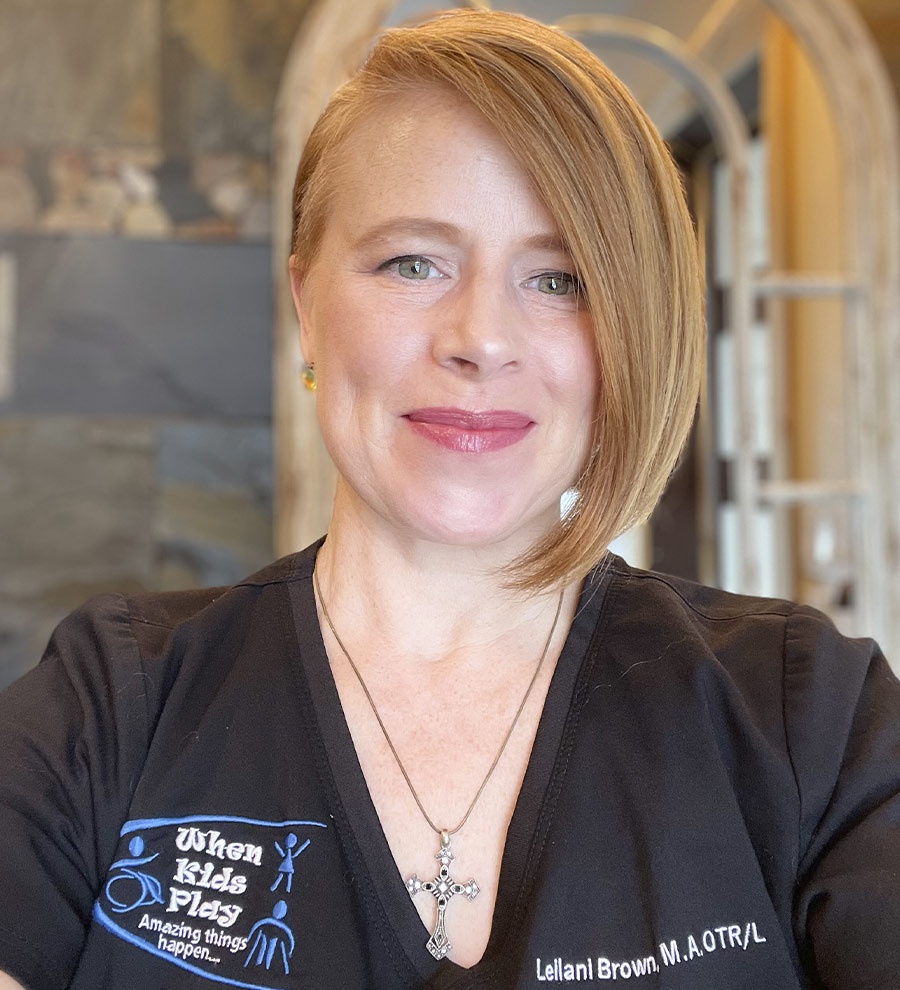
The Council for Accreditation of Counseling and Related Education has granted full accreditation to three master’s counseling programs: Addiction, Clinical Rehabilitation and Clinical Mental Health. Each program is accredited for eight years, the maximum period allowed.
The accreditation validates the innovative way the school has designed the department where three-quarters of coursework is shared by all programs with collaboration between programs on content development and delivery.
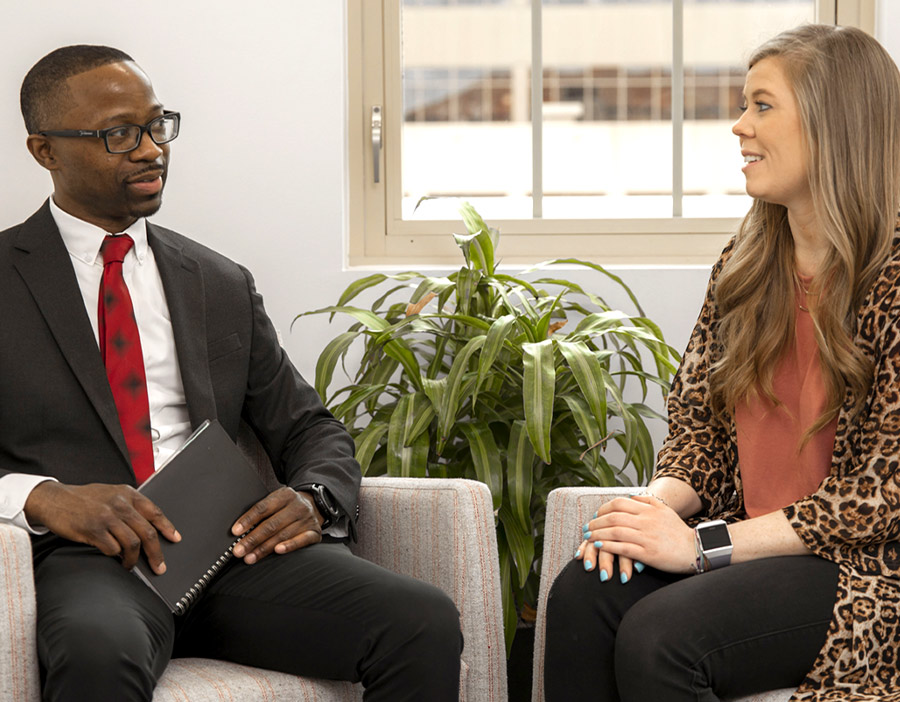
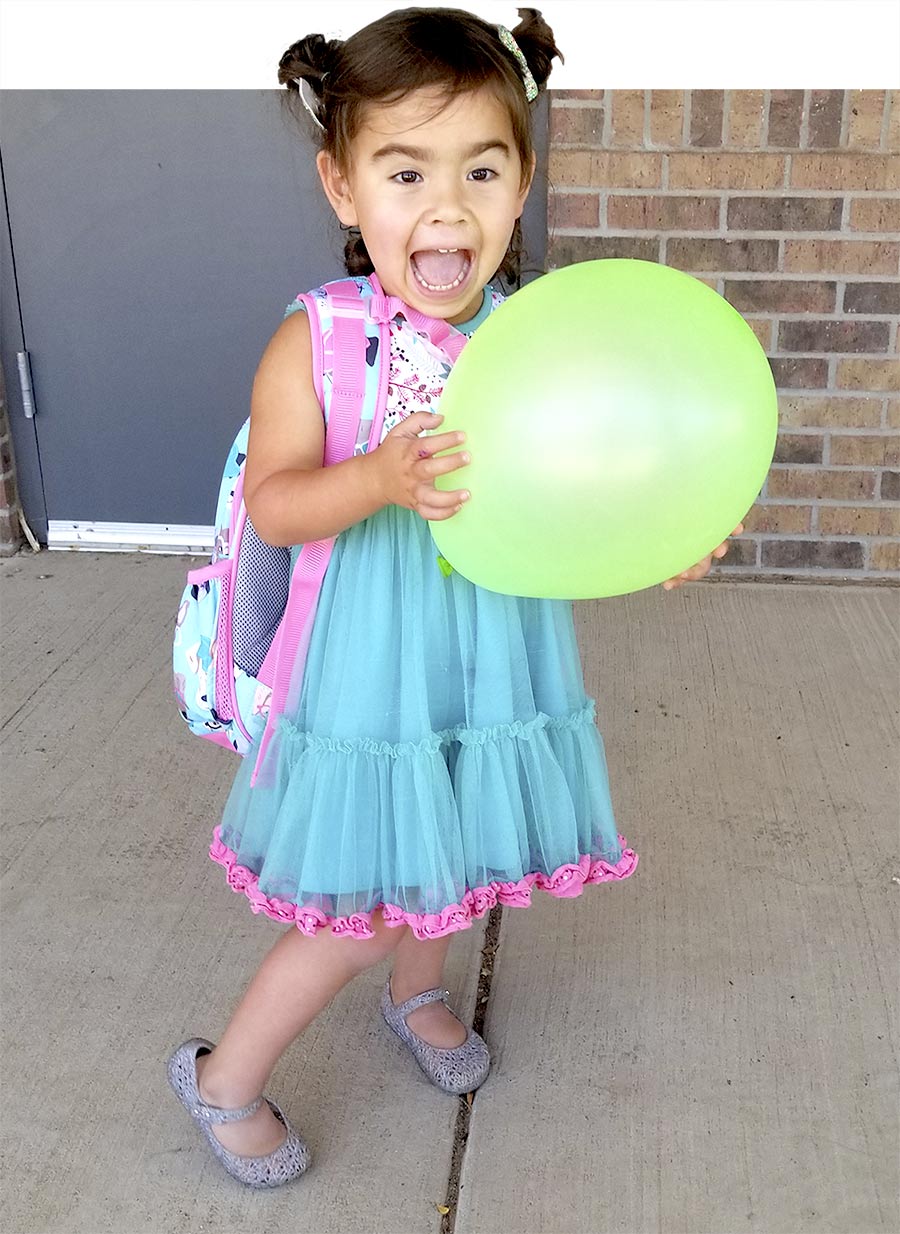
At 12 months old, Eleanor Smith’s speech worried her mother, Stephanie Smith. The toddler wasn’t making many sounds, and she didn’t seem to be improving.
When Eleanor was 18 months old, her pediatrician evaluated her, and recommended speech therapy. “We were moving to Lubbock, so the doctor suggested we try the TTUHSC Speech, Language and Hearing Clinic, and it ended up changing our lives,” Stephanie said.
Eleanor participated in the clinic’s Tech Tykes summer therapy program two years ago; this year, her little brother will attend as well. “It’s amazing what they do,” Stephanie said. “They have great interactive play in which they incorporate speech therapy and the children don’t even realize they’re in therapy!”
 School of Health Professions
School of Health ProfessionsA Final Ray of Sunshine
“The best way to describe Molly is that she is an all-around beautiful person. She walks into a room, always happy, thinking, ‘How can I make everyone’s day better?’,” said Scott Bullington, a classmate.
Molly Beckman died Feb. 1, 2021. She was a second-year student in the Department of Speech, Language and Hearing Sciences Doctor of Audiology Program. The Molly Beckman Memorial Audiology Scholarship Endowment, established by her parents, honors her memory.
From an early age, Molly would sing “You are my Sunshine,” and she lived her life shining for others. With her big smile and even bigger heart, she decided her dream was to serve as an audiologist.
 Jerry H. Hodge School of Pharmacy
Jerry H. Hodge School of PharmacyLive Care. Give Care.
“Transplant patients can’t go one day without medication — they need it to stay alive,” said Suha Alsalihi, PharmD, (Pharmacy ’18) a retail pharmacist in the Dallas-Fort Worth metroplex. “My staff pharmacists and technicians would deliver medications in dangerous driving conditions, spending hours on the road to make sure our patients received
After a few years in retail pharmacy, Alsalihi covered a specialty pharmacist’s shift, enlightening her to the possibility of organ transplant pharmacy. She pursued more of these opportunities and now works most of her shifts with organ transplant teams at Medical City Healthcare.
Due to the collaborative nature of this specialty, pharmacists can call patients, help monitor side effects and talk to nurses to suggest next steps. They also often go out of their way to make sure the patient receives the best care.
By the time a patient receives the “Your prescription is ready for pick up” phone call, Alsalihi and her team have spent hours looking up coupons and ensuring
“They’re already dealing with a new organ,” she added. “They shouldn’t have to stress about anything else.
“Just like pharmacists dispense medications, we also dispense care. I think that’s just one of the many things that inspires me about the organ transplant
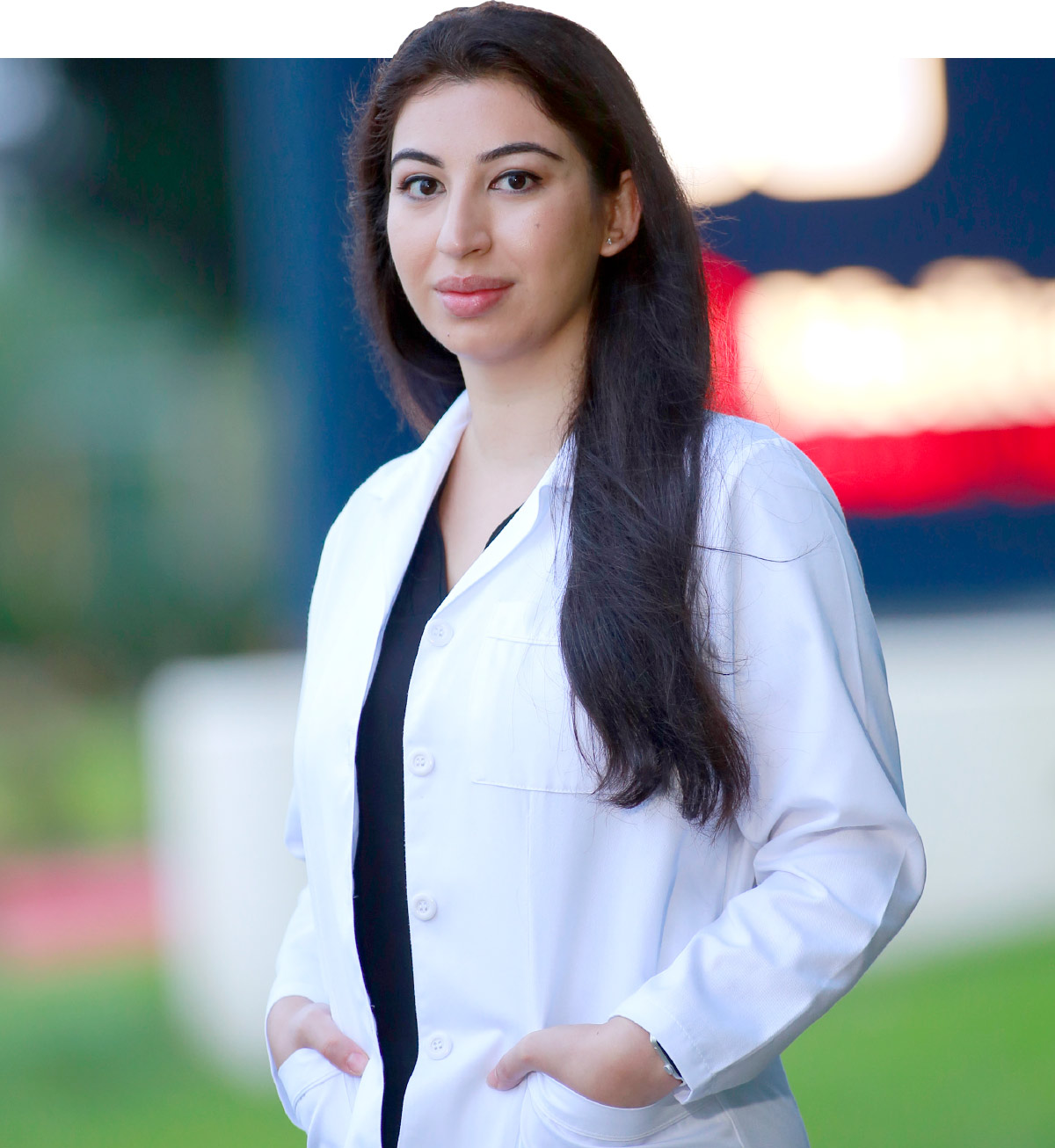
Role reborn
 Graduate School of Biomedical Sciences
Graduate School of Biomedical SciencesMichael Dang Didn’t Want to be a Doctor, but Cancer Forced Him to Reconsider
Then he lost 30 pounds in 10 days.
His family wanted him to pursue medicine, like his sister. Even his initials, M.D., proved his destiny, they say. Dang instead chose finance, driven to understand the financial collapse of 2008.
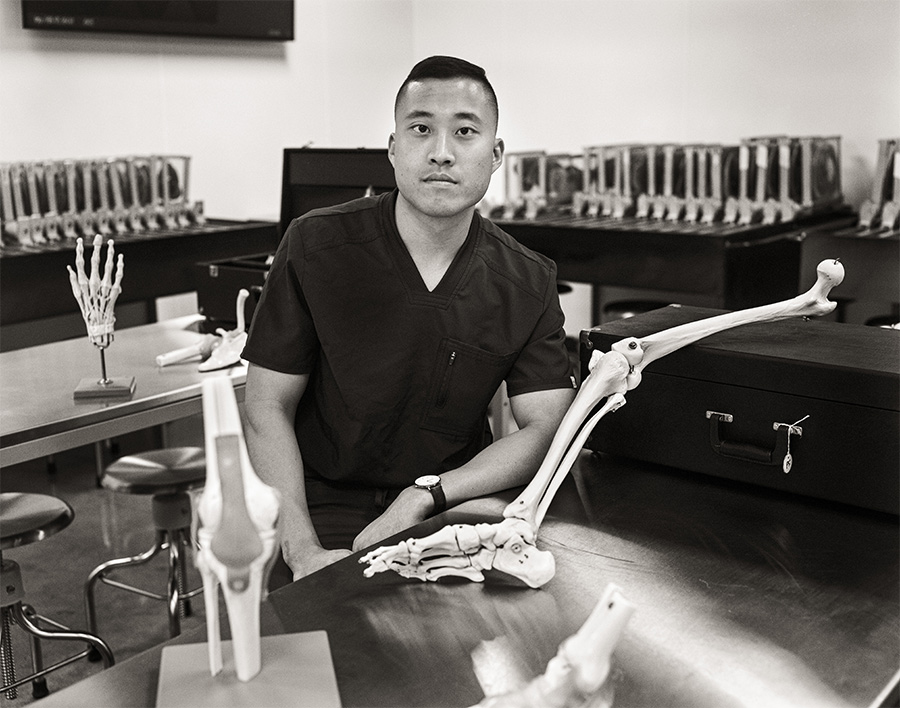
Hobbling to his car, he drove home, arriving at 11 a.m. and then sleeping until 8 p.m. the following day. He woke up drenched in sweat. That was only the beginning.
 Graduate School of Biomedical Sciences
Graduate School of Biomedical SciencesBergeson, PhD, received a $7.25 million National Institutes of Health (NIH) grant to begin the Food and Drug Administration approval process for her new drug, designed to combat alcohol use disorder — a condition encompassing a range of unhealthy drinking behaviors.
“Alcohol use disorder affects the patient, their family and loved ones, and society in general,” Bergeson added. “Better solutions for those with this disorder have the potential to reduce significant personal suffering as well as decreasing morbidity and mortality rates, which cost the U.S. over $250 billion annually.”
In All Things of Nature, There is Something of the Marvelous
tanding atop California’s Mount Whitney, Thomas Pressley and Michael Blanton gazed in awe at the surrounding peaks of the Sierra Nevada below them. At 14,500 feet, they had reached the highest point in the continental U.S.
The view was breathtaking — literally, Pressley quips. At that altitude, it’s a challenge to breathe.
Blanton reaches into his backpack, pulling out the four cans of Texas Shiner beer he hauled up the mountain to toast their group’s achievement. In that unspoken moment, the duo reflected on just how far they climbed, yet there were greater heights to reach.
Sight
Unseen


Sight
Unseen

t’s been 15 days since Colleen Rud heard from an underage human trafficking victim she knows in the Abilene area. The girl is moved around often. As a case management advocate for the Regional Victim Crisis Center in Abilene, Rud tries to contact victims once a week, but they don’t always respond. She constantly checks her phone waiting for a call or text, hoping in the meantime that they’re safe.



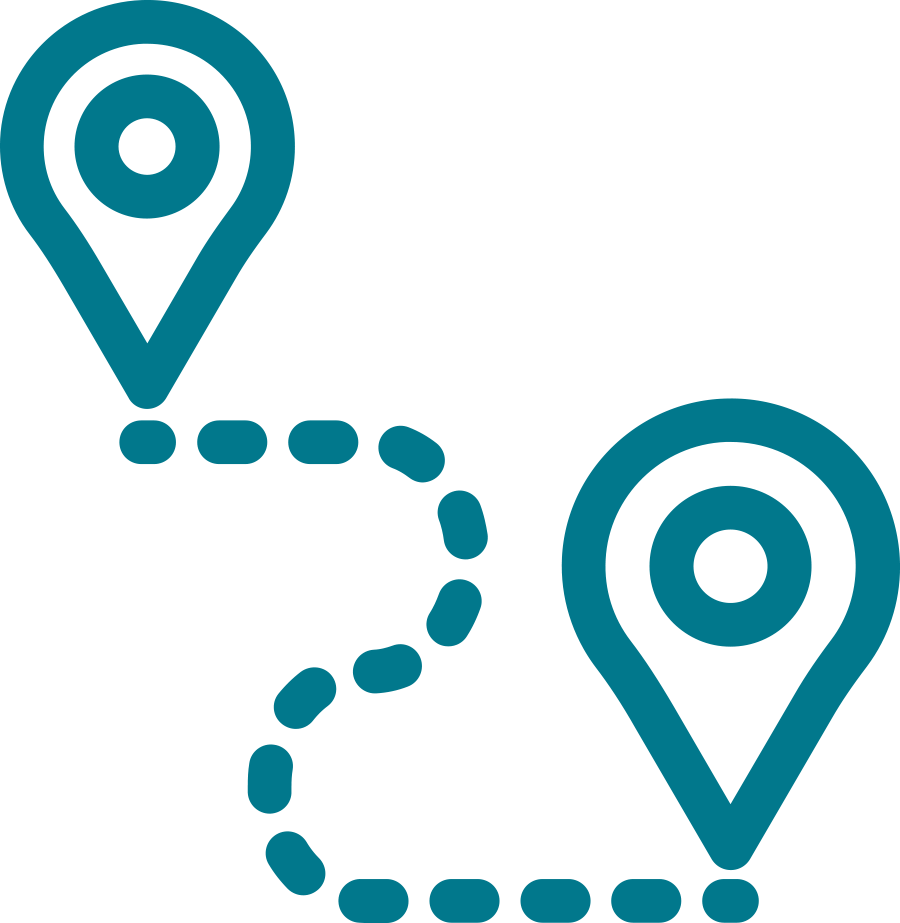


Connecting with TTUHSC Alumni Rounds
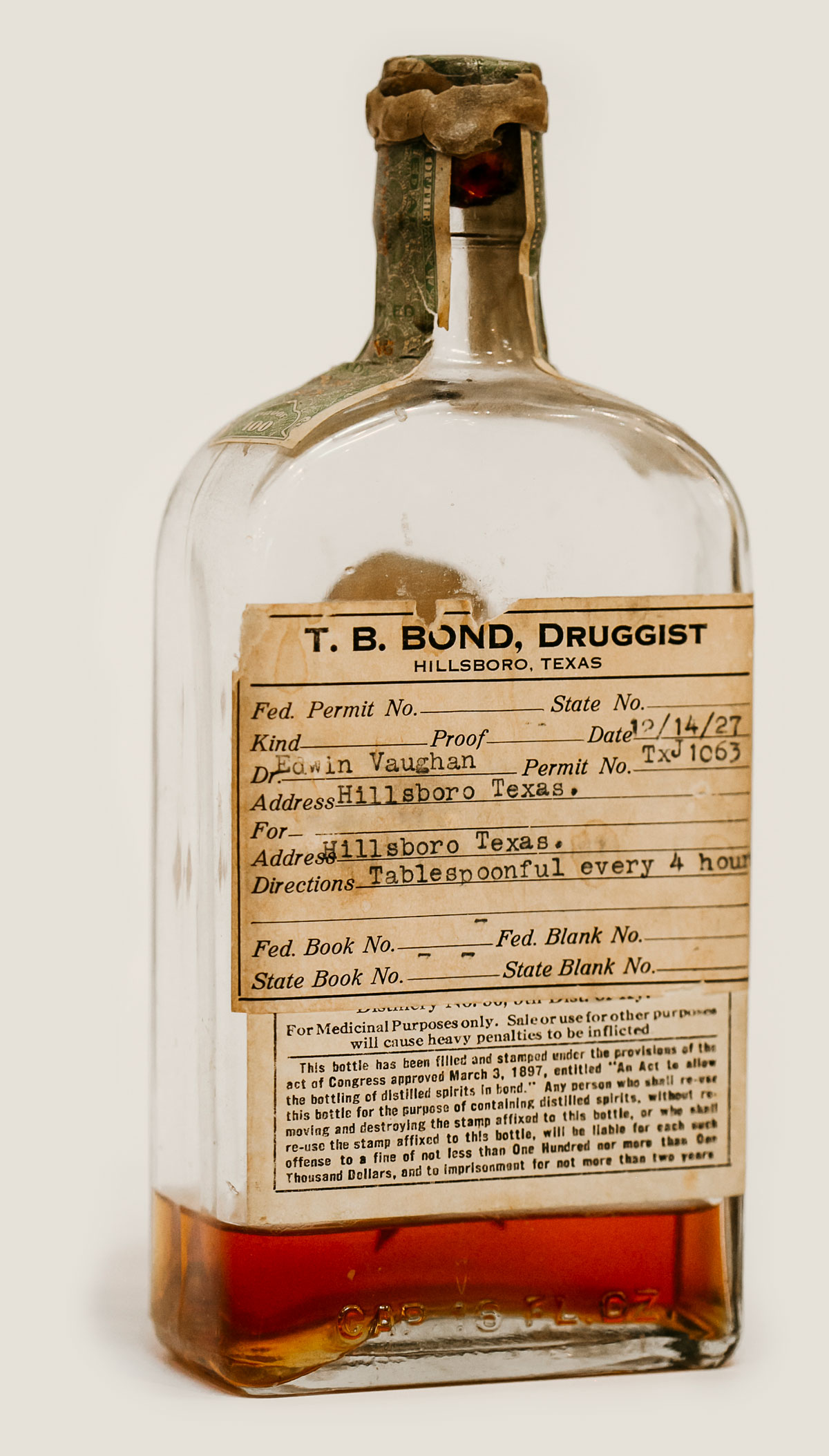
Dec. 14, 1927
Diagnosis: Senility
Prescription: Whiskey
Based on genealogical research, this prescription was for a man who most likely had Alzheimer’s disease. Alcohol was often the remedy for common ailments and diseases. The only legal way to access it at the time, which was during Prohibition, was through
Baby teething? Rub some whiskey on their gums. Asthma? Bourbon. Diabetes? Cancer? Indigestion? Depression? Brandy.
“If only this whiskey could talk,” said Susan Denney, MA, curator for the Texas Pharmacy Museum housed in the Jerry H. Hodge School of Pharmacy in Amarillo. “The museum has many items like this one with stories to tell.”
 WHAT’S NEW
WHAT’S NEW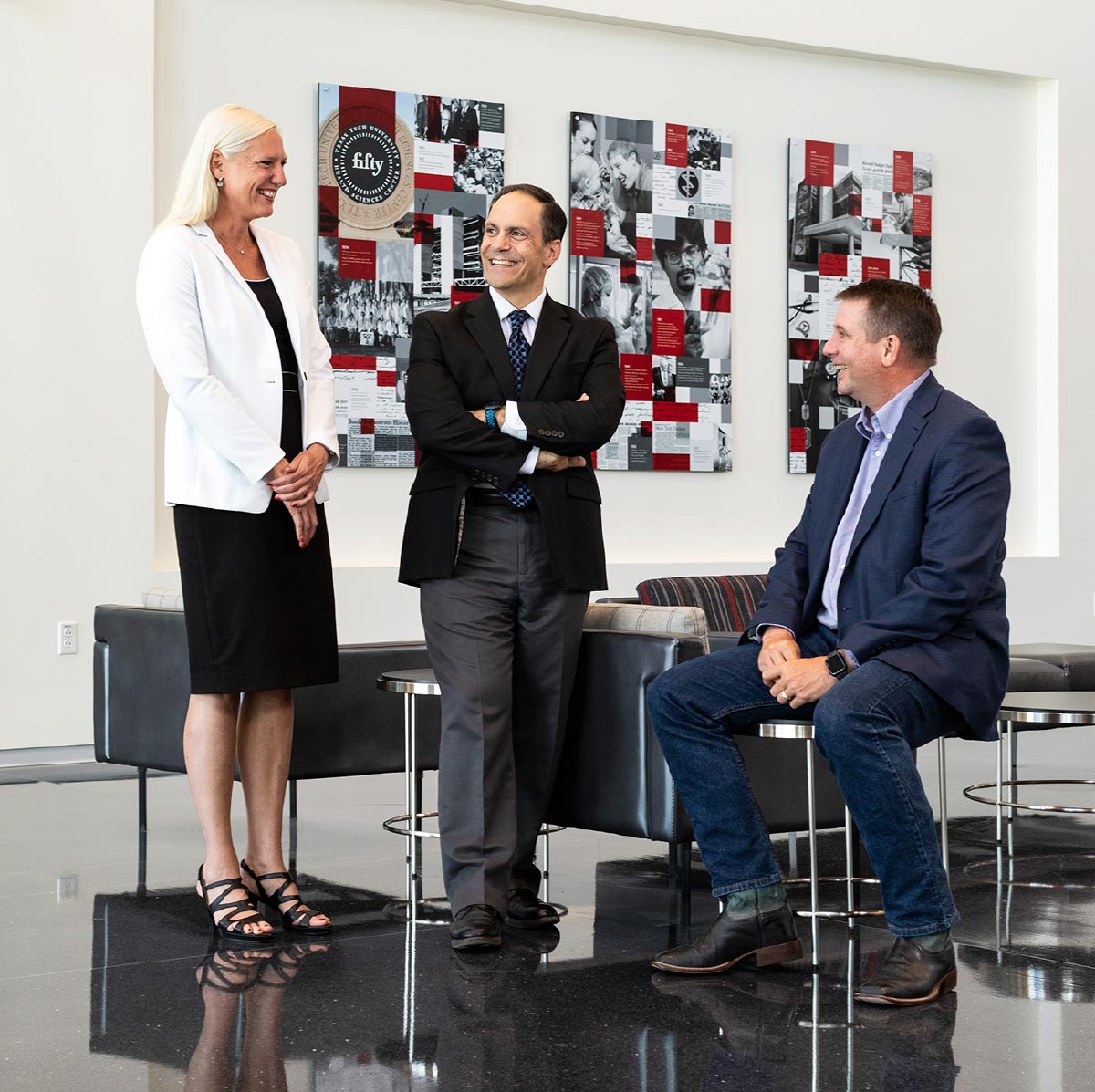
“I wanted to see if the physician actually read the paperwork,” he quipped.
Originally from New York, D’Agostino, DO, MPH, MBA, accepted a position with Hartford Hospital in Hartford, Connecticut in 1997. New employees were required to undergo a physical exam, which led a then curious D’Agostino to challenge their process.
 WHAT’S NEW
WHAT’S NEW VALUES CORNER
VALUES CORNERSurgery’s No Joke, But It’s OK to Laugh
I AM THE PATIENT’S FIRST AND LAST IMPRESSION
Their impression of the appointment begins and ends with me, so I strive to show them that they don’t just receive treatment from us, they are a part of us and what we do here.
laughter is the best medicine
It’s not personal when we are treated poorly or if they vent their frustrations to us. I try to ensure their experience with us is as good as possible by sharing funny jokes. The jokes are in high demand — sometimes when the clinic starts off especially busy, a patient will ask for the joke of the day, and we’ll realize we haven’t written it yet! One day my calendar was missing from my desk, and I realized that patients were passing it around in the waiting room reading the jokes for the month.
It’s who we are
We work hard at the front desk to live the values every day, so why not add our voices to the mix? If people outside of TTUHSC are going to see the university’s values, it’s going to be through people like us.
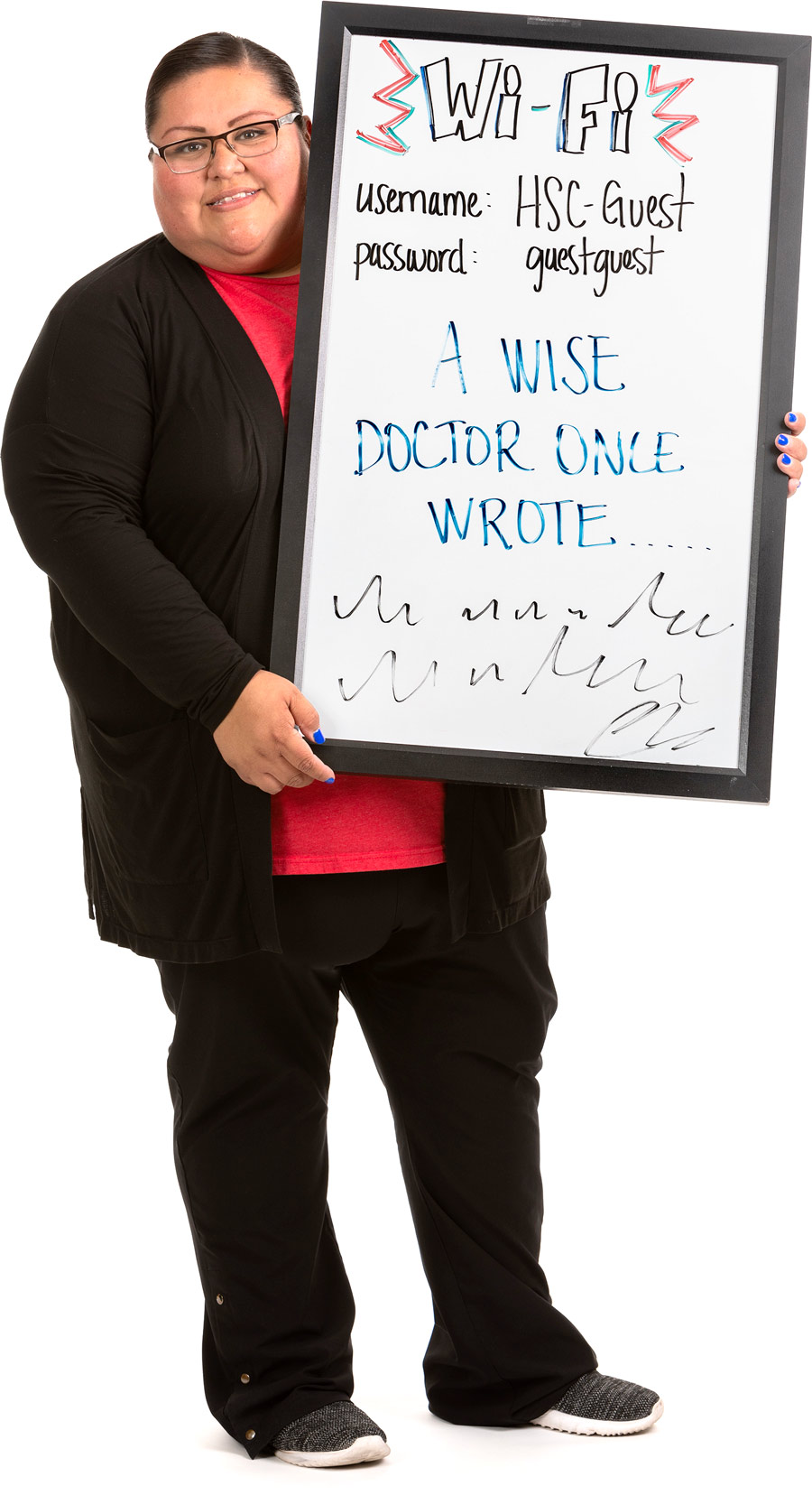
 HEALTH SCENE
HEALTH SCENEWhen Disaster Strikes We’ll Be Ready
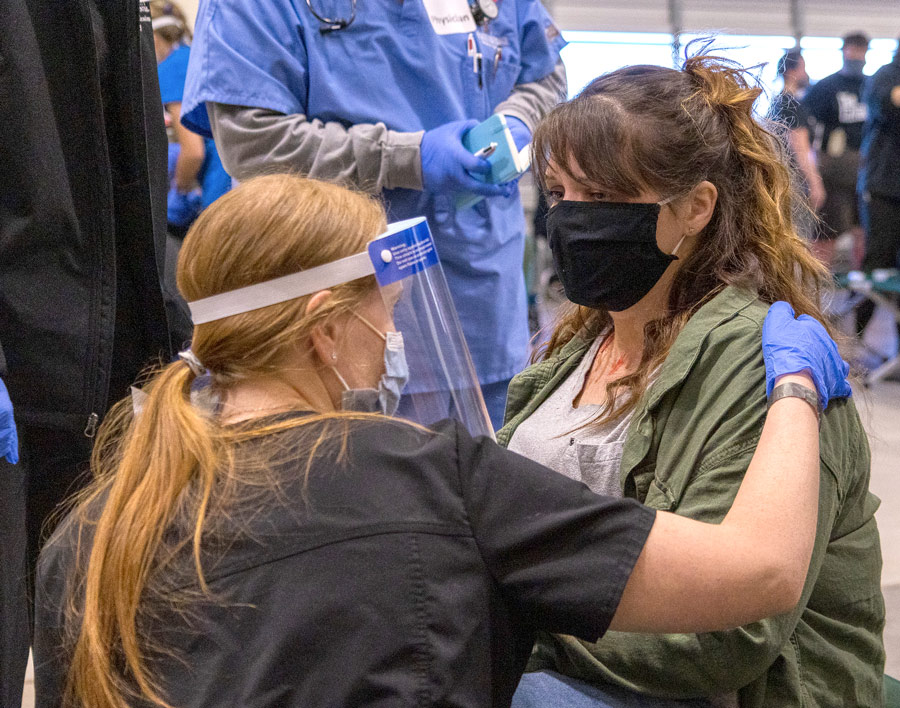
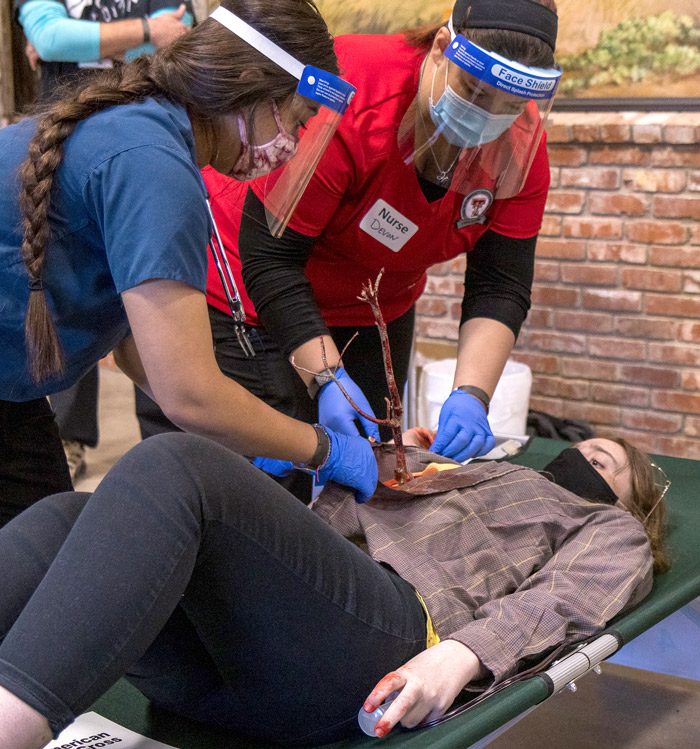
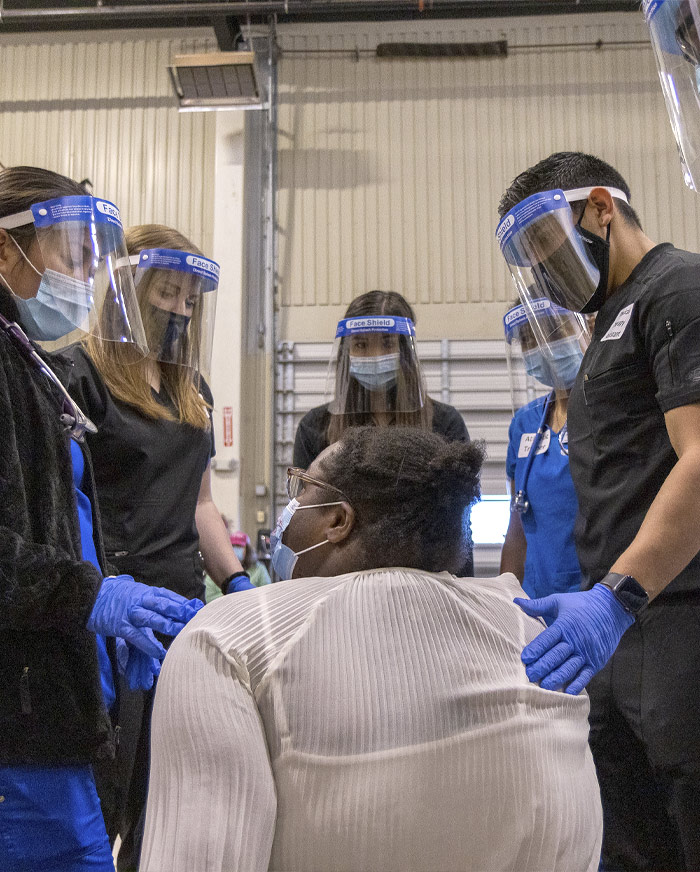
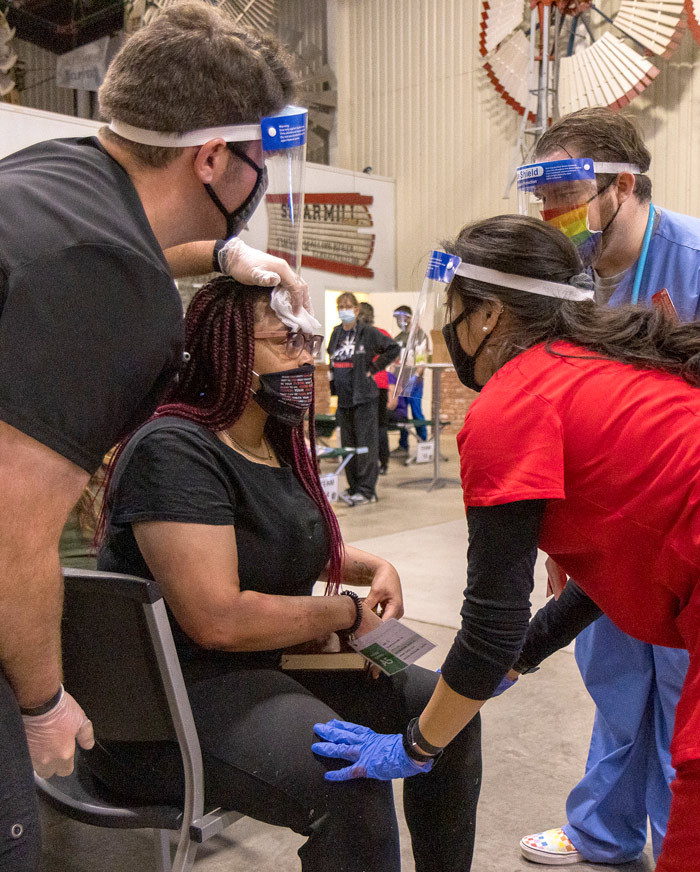

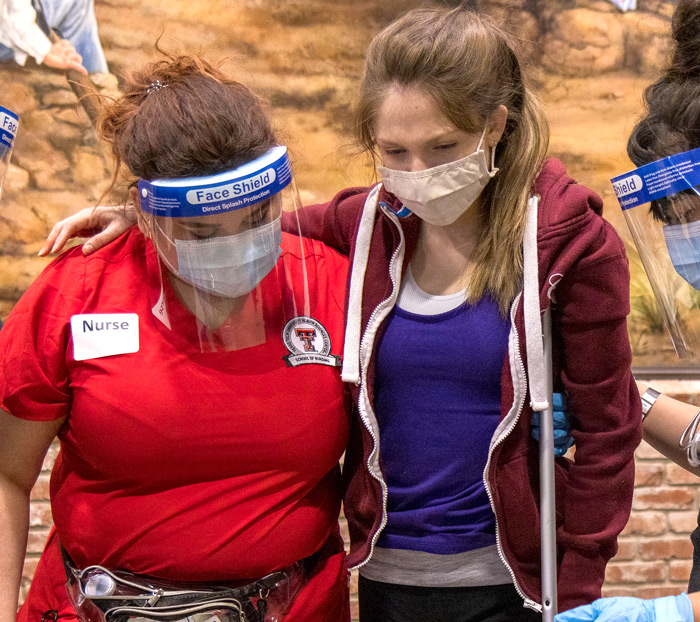
2| A tree limb pierces the abdomen of Patient D5.
3| Patient A2 has glass lodged in her hands and feet.
4-5| Falling debris results in head injury for Patient A5.2 and foot and toe fractures for Patient A4.

Update Catching Up With TTUHSC Alumni & Friends
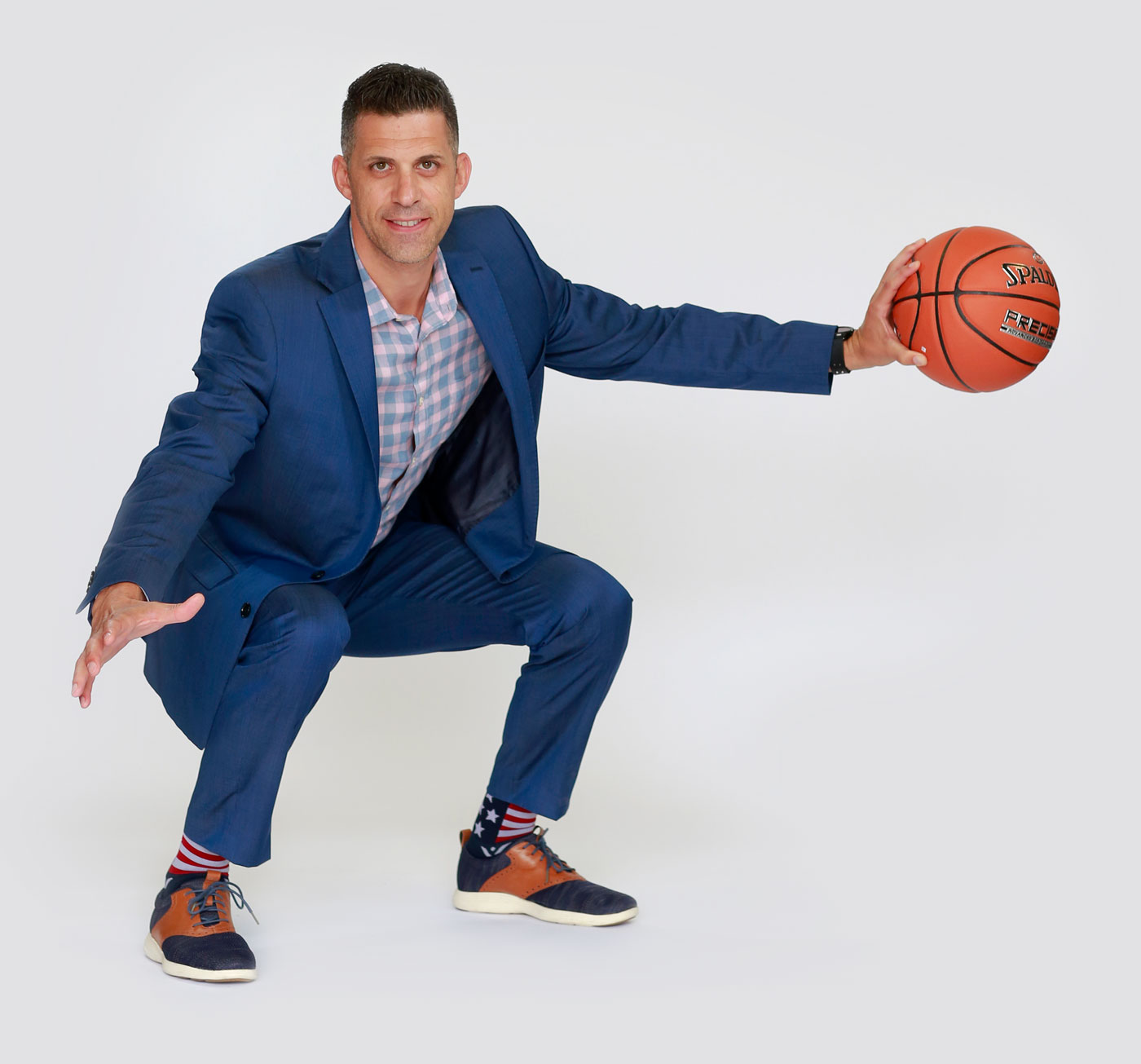
Health Professions Graduate: 2013
What motivated you to pursue a PhD in Rehabilitation Sciences?
As a child, I was intrigued by the function of toys, and as an athlete, with the occasional injury. I decided to pair the two motivations. My passion to utilize the most advanced technology to help people recover faster and provide early stage detection for those at risk of injury became my ultimate focus, which led me to rehabilitation science. It’s the perfect combination of human anatomy
Why is a rehabilitation scientist imperative to a health care team?
By connecting advanced sensors to patients to detect motion, muscle activity and body forces utilizing extensive computer technology and metrics, we can develop a comprehensive treatment plan for patients and their providers. X-rays only capture one single point in time. You can’t see pain of daily life in the films — that’s where I come in.
What is most important to you in your career?
The patient’s quality of life. As soon as a I started working in a hospital setting, I saw patients impacted by injury and knew I could help. — Jordan Pape
 News & Notes
News & NotesCasey Mraz, MD
Medicine Graduate: 2016
Living and Working the Dream
Mraz’s pediatrician became more than a physician once Mraz discovered a passion for health care. Ultimately, their bond paved Mraz’s way into family medicine helping her narrow down her specialty.
“I saw her from the time I was born until I was 18,” Mraz added. “She took me under her wing and let me work in her clinic.”
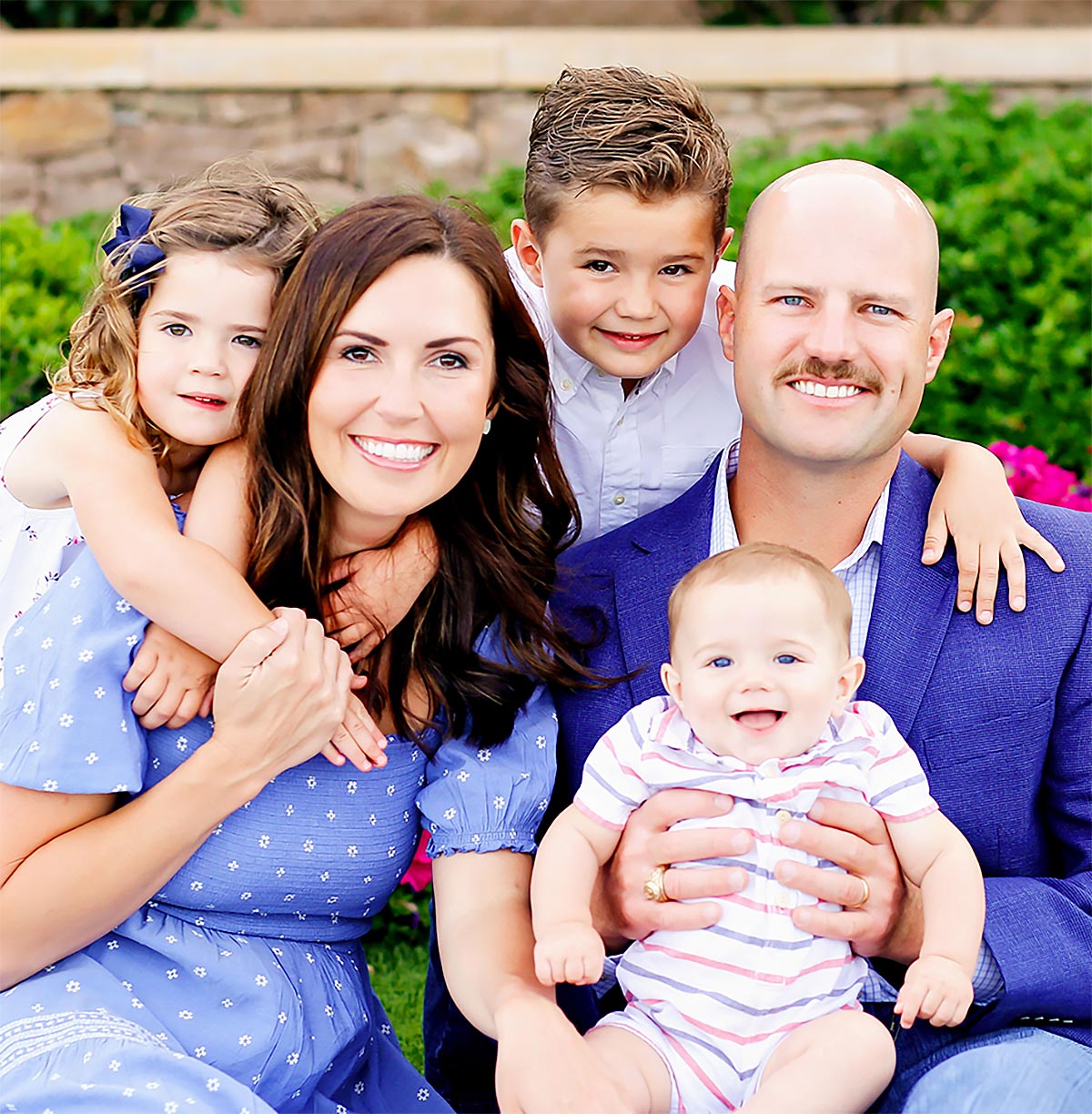
Today, Mraz focuses on her patients’ overall wellness and loves making a difference in their lives, giving them more quality time with their families. And, at the end of the day, she gets to go home to her own. — Glenys Young
 News & Notes
News & NotesKayla Money, PharmD, BCPS
Pharmacy Resident and Graduate: 2018, 2017
No Guts, Still Plenty of Glory
“I have a great opportunity to catch a lot of potential medication errors, dosing errors and drug to drug interactions,” Money said. “The doctors rely on us to make sure the doses are right, timing is correct, and there’s no negative interaction with the patients’ allergies.”
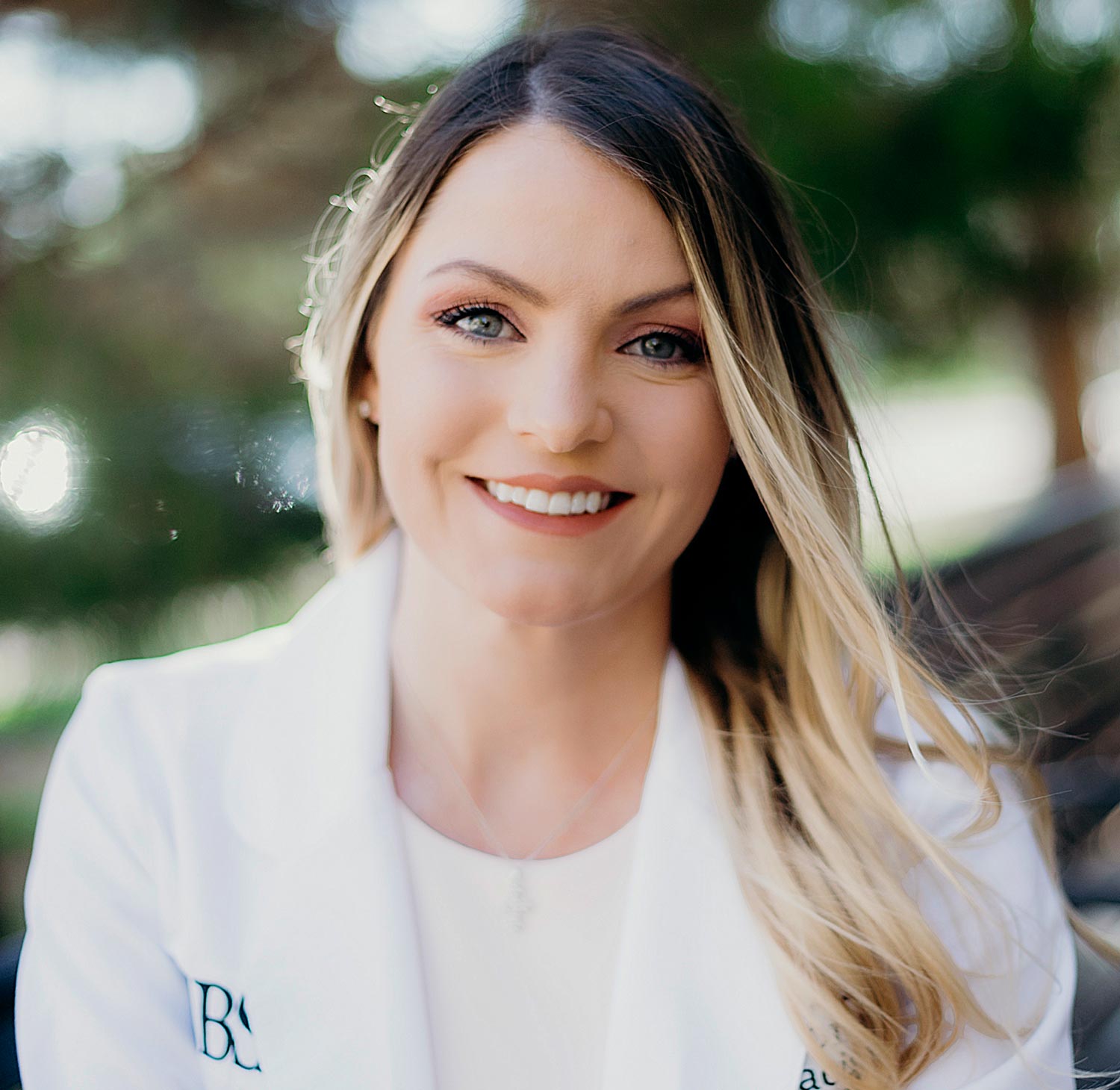
“I’m not so good with blood and guts,” she admits, “but I’m enthusiastic about leading others to be healthier, happier and more productive.” — Glenys Young
 News & Notes
News & NotesJacqueline Ward, DNP, RN
Nursing Graduate: 2005
All in the Family
Ward is now the chief nursing officer of the hospital whose halls she used to walk through as a child. She works for the same chief executive officer as her mom did for 36 years and appreciates the family atmosphere. Her responsibilities are extensive, especially when you’re in charge of 30% of the workforce.
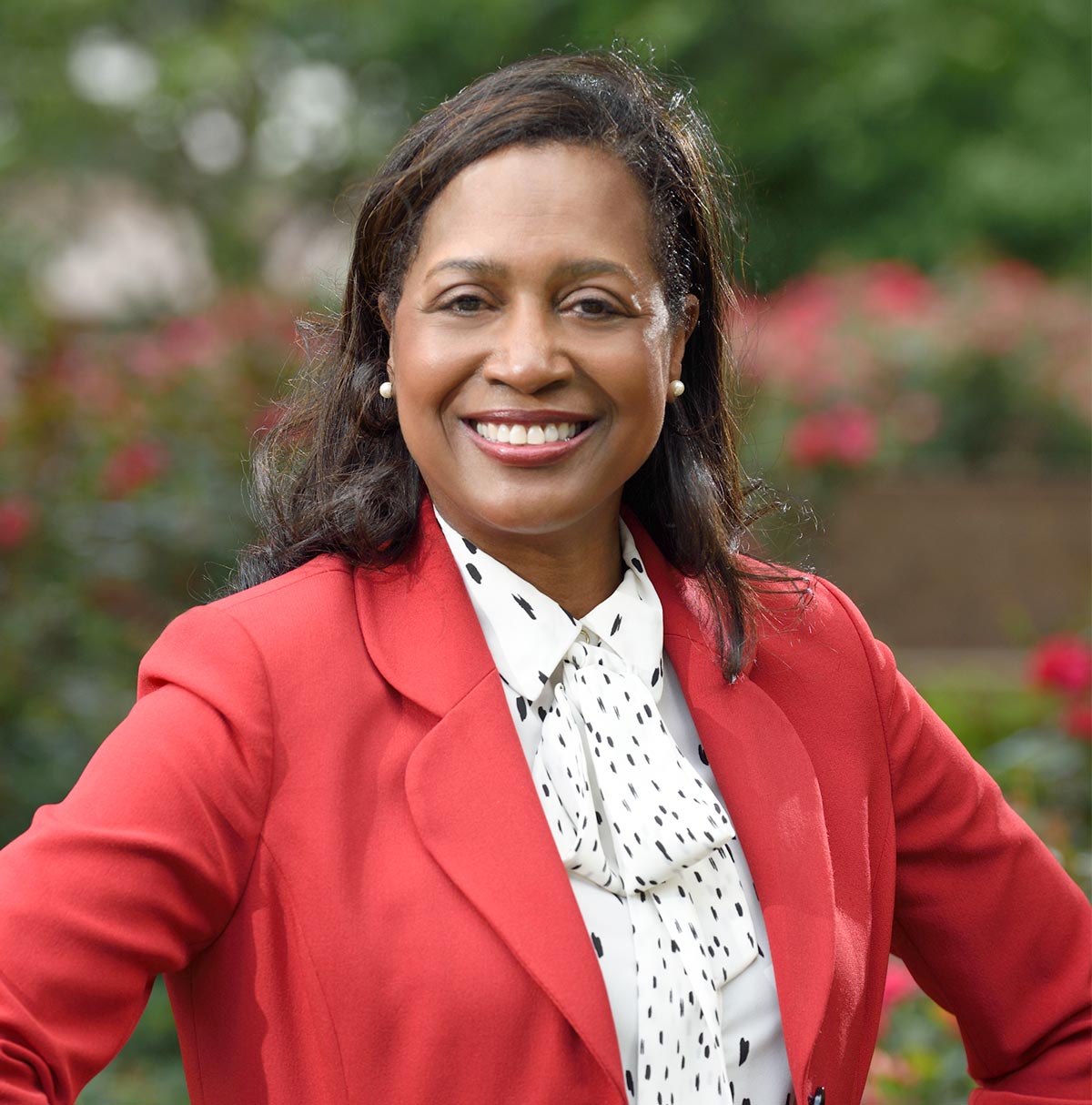
 News & Notes
News & Notes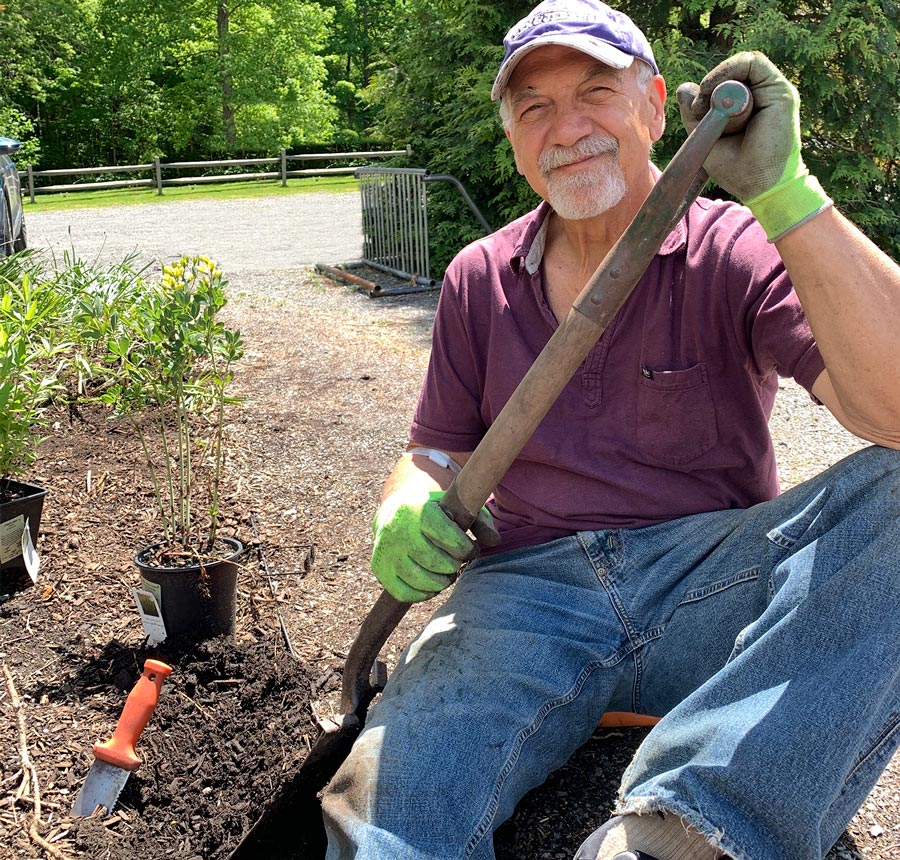
Philip Domenico, PhD
Biomedical Sciences Graduate: 1983
Bacterial slime — a layer of extracellular material that surrounds bacteria cells to protect them from environmental dangers like antibiotics — is involved in over 80% of infections and can be found in any ecosystem.
In retirement, Domenico observes his anti-biofilm compound’s progress while metamorphing his scientific career back to its artistic beginnings — sculpting, cartooning and gardening with his wife, Gloria, as they volunteer for several Berkshire gardens and the Central Park Conservancy. — Kate Gollahon
 DONOR PROFILE
DONOR PROFILE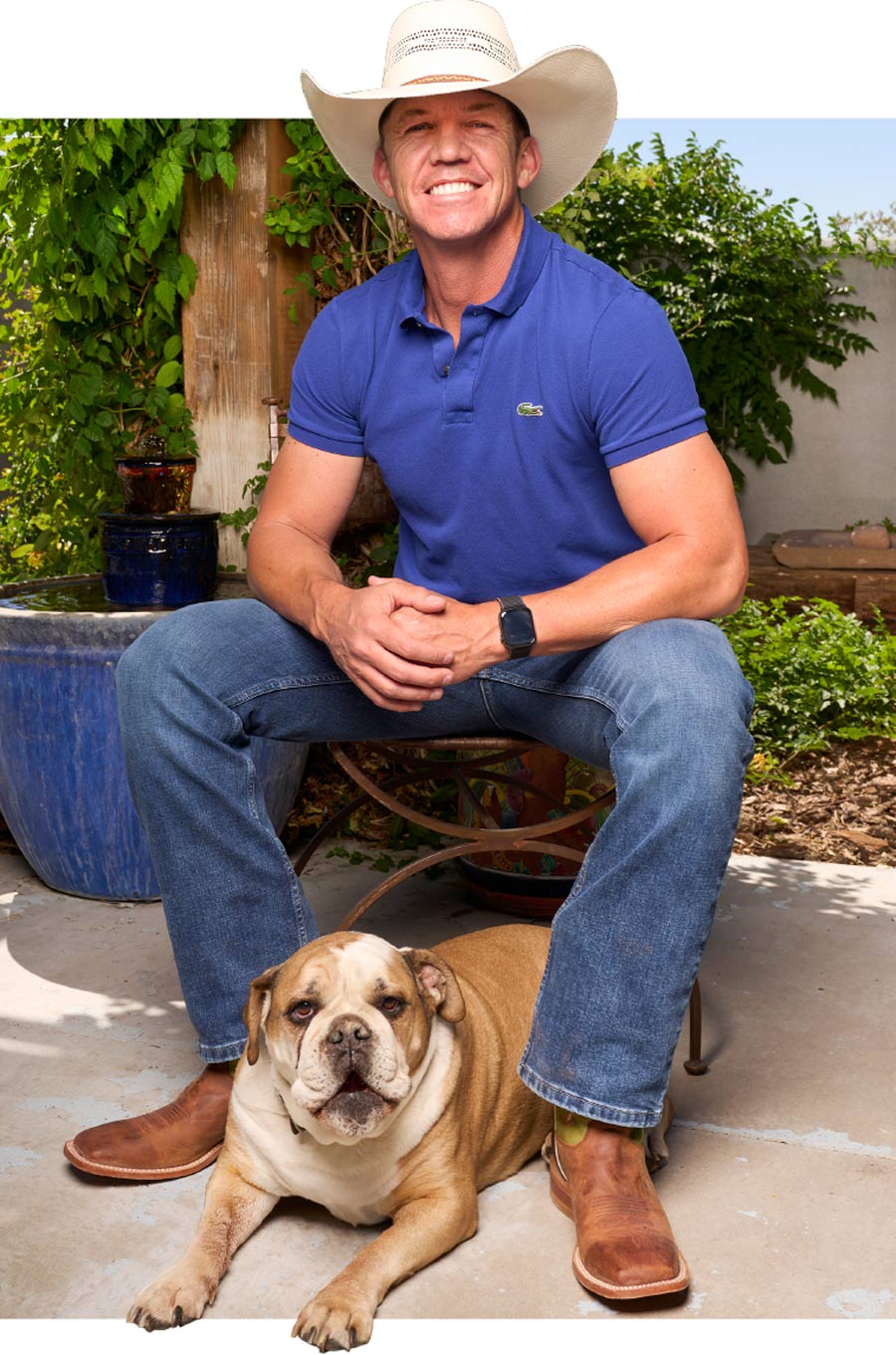
A Jewel of a Gift
There’s got to be a way to save lives in a more controlled environment, Brown thought, as he prepared his patient for the flight to an Albuquerque, New Mexico, trauma center.
Returning to the Rio Grande Valley as a health care provider was his plan since leaving for college. Brown, CRNA, (Nursing ’03) is now the first nurse anesthetist at Socorro General Hospital to live in the community for more than 40 years. His journey began at TTUHSC, fueled by the generous support of a family who chose to honor their beloved mother by establishing the Jewel Benton Endowed Scholarship in Nursing, the first of its kind in the School of Nursing.
As ‘airway guy,’ Brown said he’s always relied on the critical thinking skills he learned as an undergraduate nurse. “Her (Benton) scholarship not only played a role in my being here but also in the quality of care I can give to those in this remote part of the state – whether they live here or they’re just passing through.” — Danette Baker
 News & Notes
News & NotesNews & Notes

Matthew Grisham, PhD, (’82)
was listed by Google Scholars as an H-Index 100, meaning that 100 of his publications have been cited at least 100 times.
Monish Makena, PhD, (’11)
has been awarded the 2020 AACR-AstraZeneca Breast Cancer Research Fellowship.
Sasanka Ramanadham, PhD, (’85)
was named a Featured Discovery recipient by the University of Alabama at Birmingham.
Victoria C. Young,
PhD student in the molecular biophysics concentration, won a Student Research Achievement Award from the Biophysical Society.

You Get the Last Word!
pulse@ttuhsc.edu


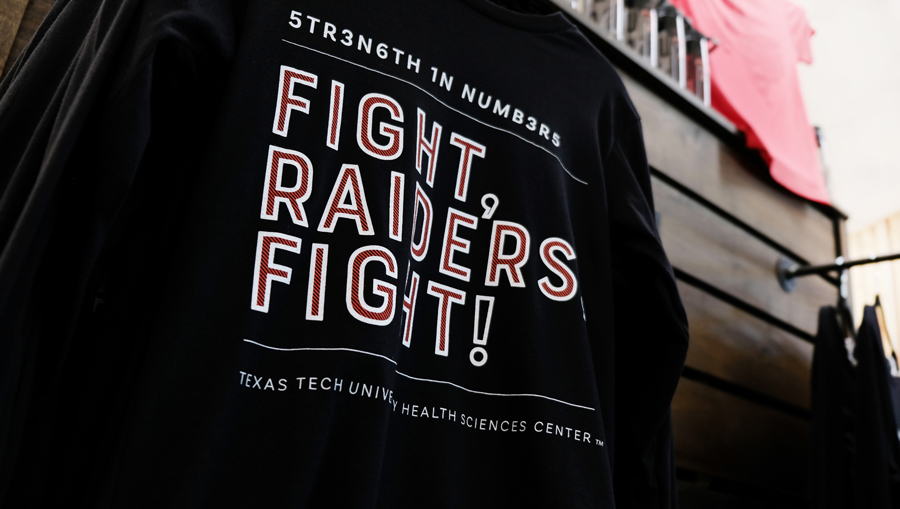

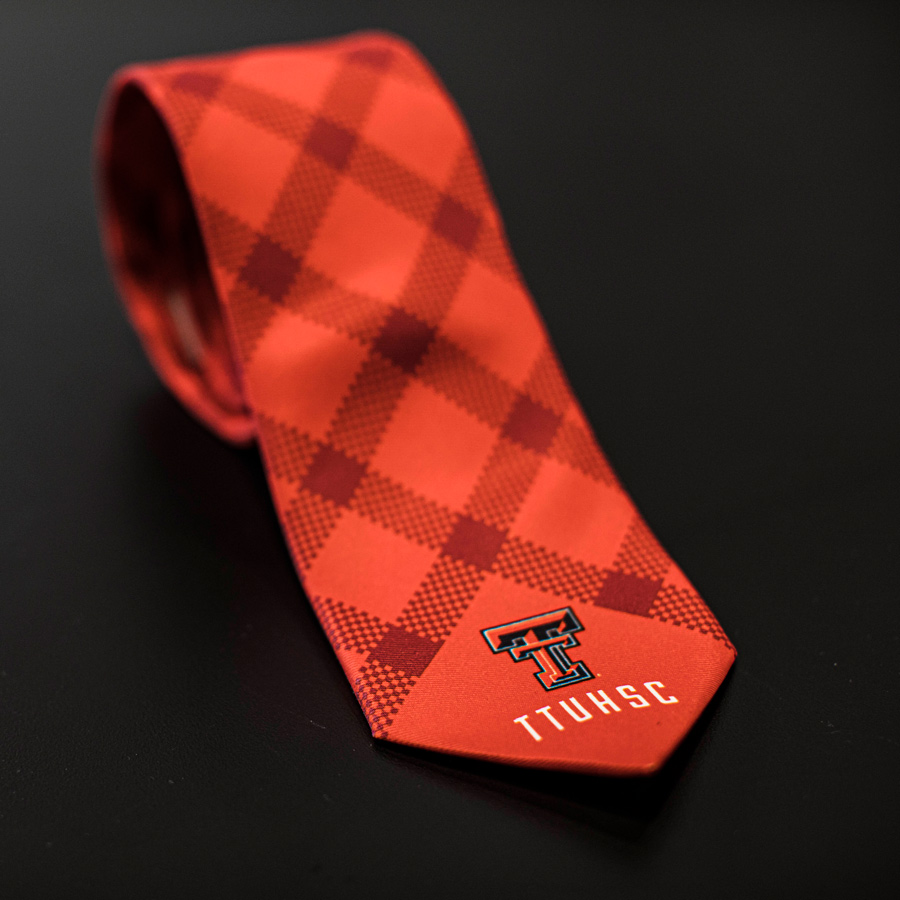
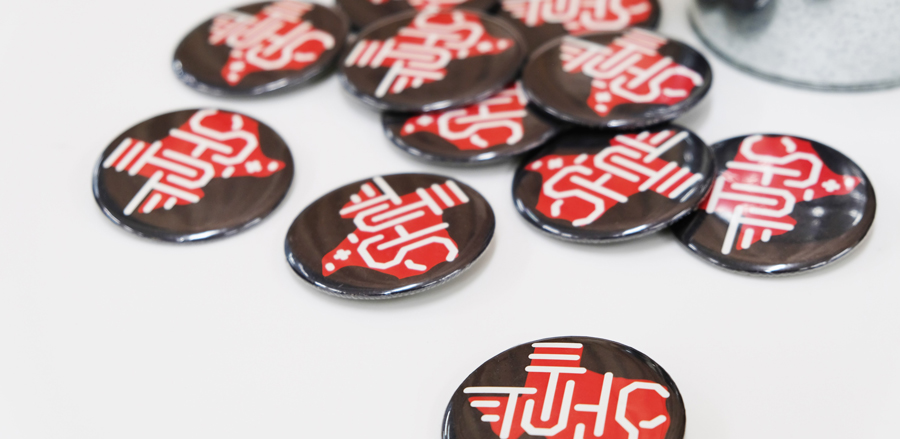

We get by with a little help from our friends.


“I never want therapy to be a financial burden for a family or for the cost to be a roadblock for a child to receive therapy.” said Sancibrian.
Contact Nathan Rice, CFRE, at giftplanning@ttu.edu or 806.742.1781 to discuss your area of impact and how to make a gift.
We get by with a little help from our friends.

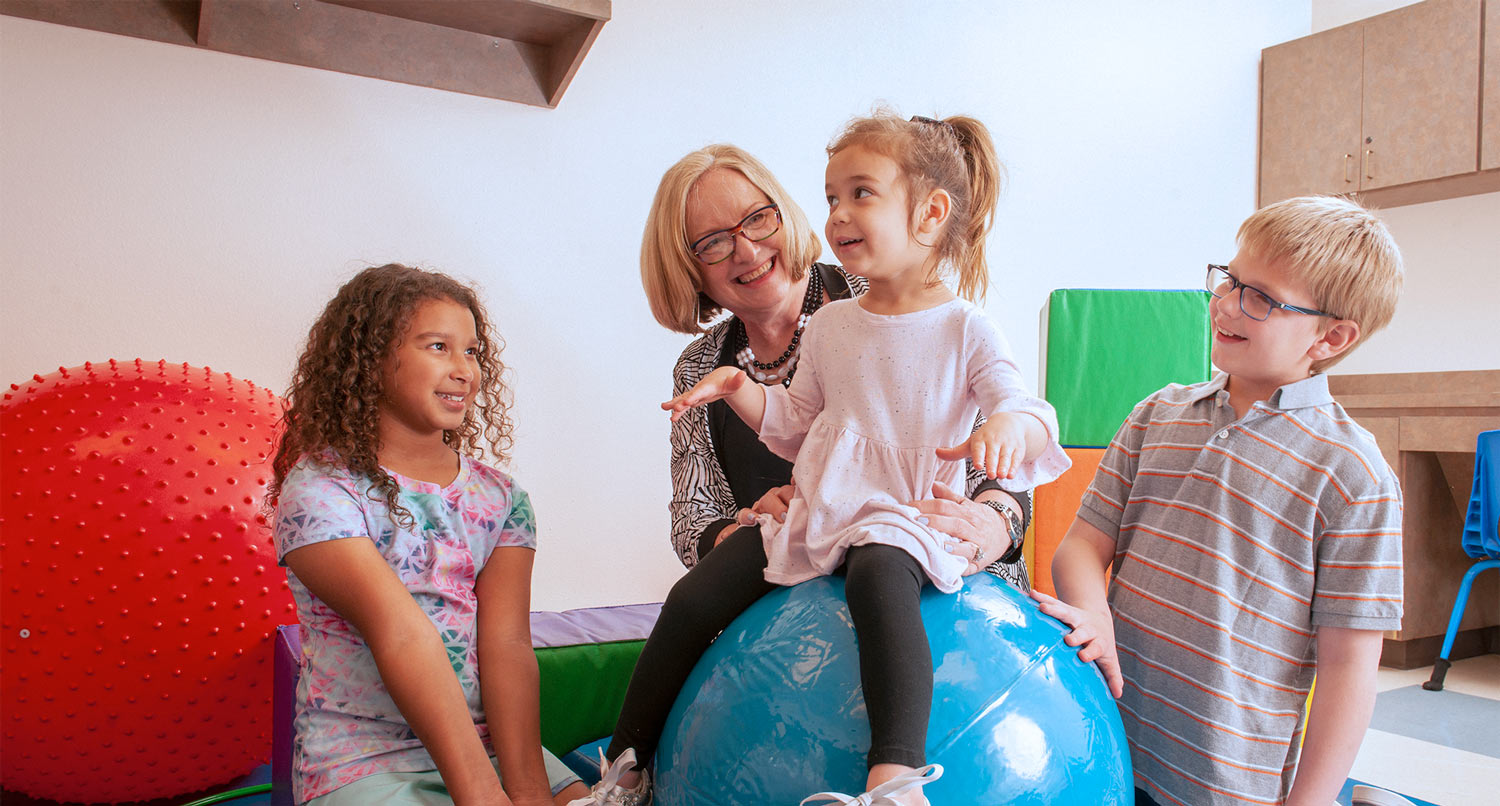

“I never want therapy to be a financial burden for a family or for the cost to be a roadblock for a child to receive therapy.” said Sancibrian.
She and her husband, Sandy, chose to make a Gift of Impact through their estate to help ensure that cost never interferes with a child’s opportunity to receive services through the clinic.
Contact Nathan Rice, CFRE, at giftplanning@ttu.edu or 806.742.1781 to discuss your area of impact and how to make a gift.

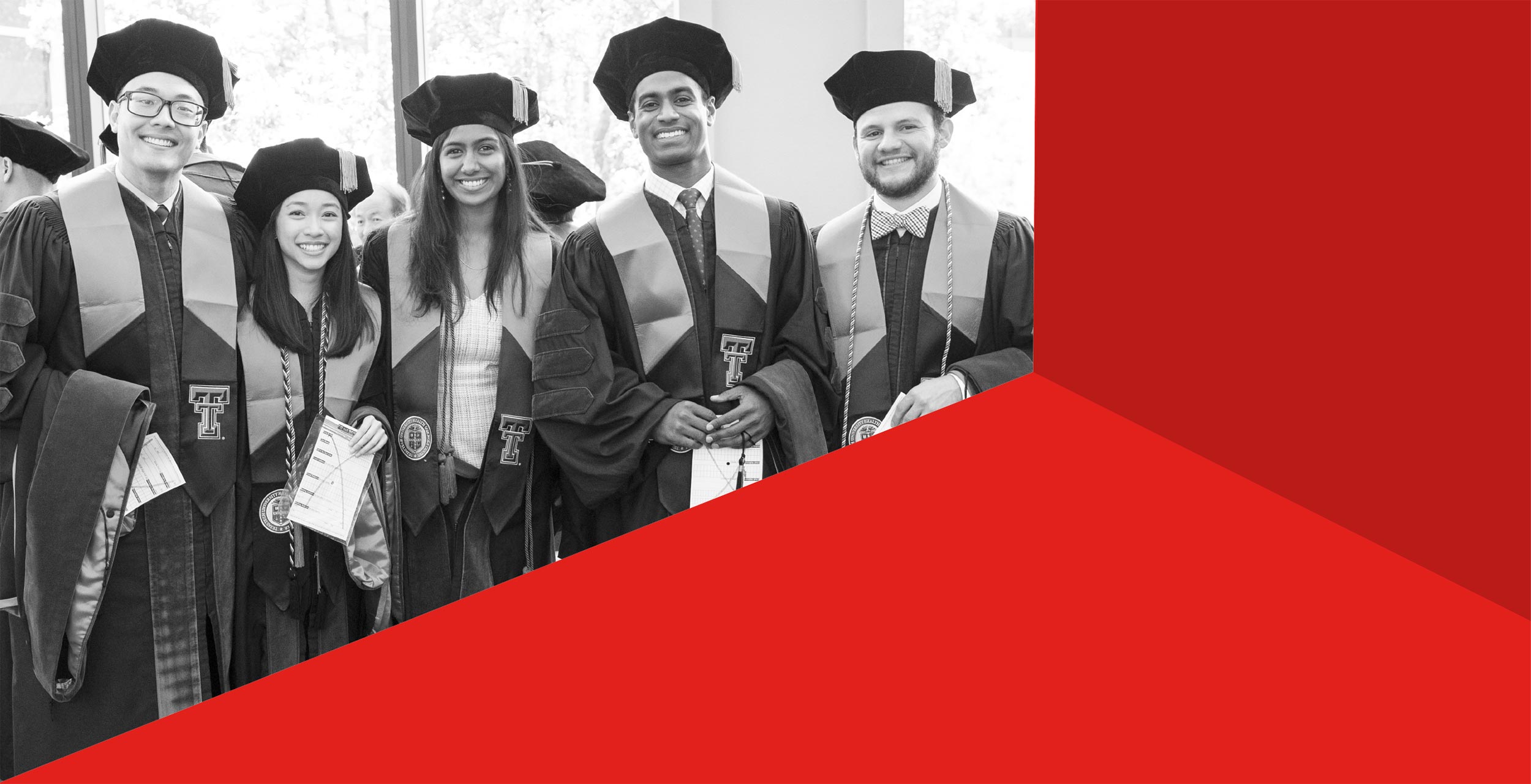

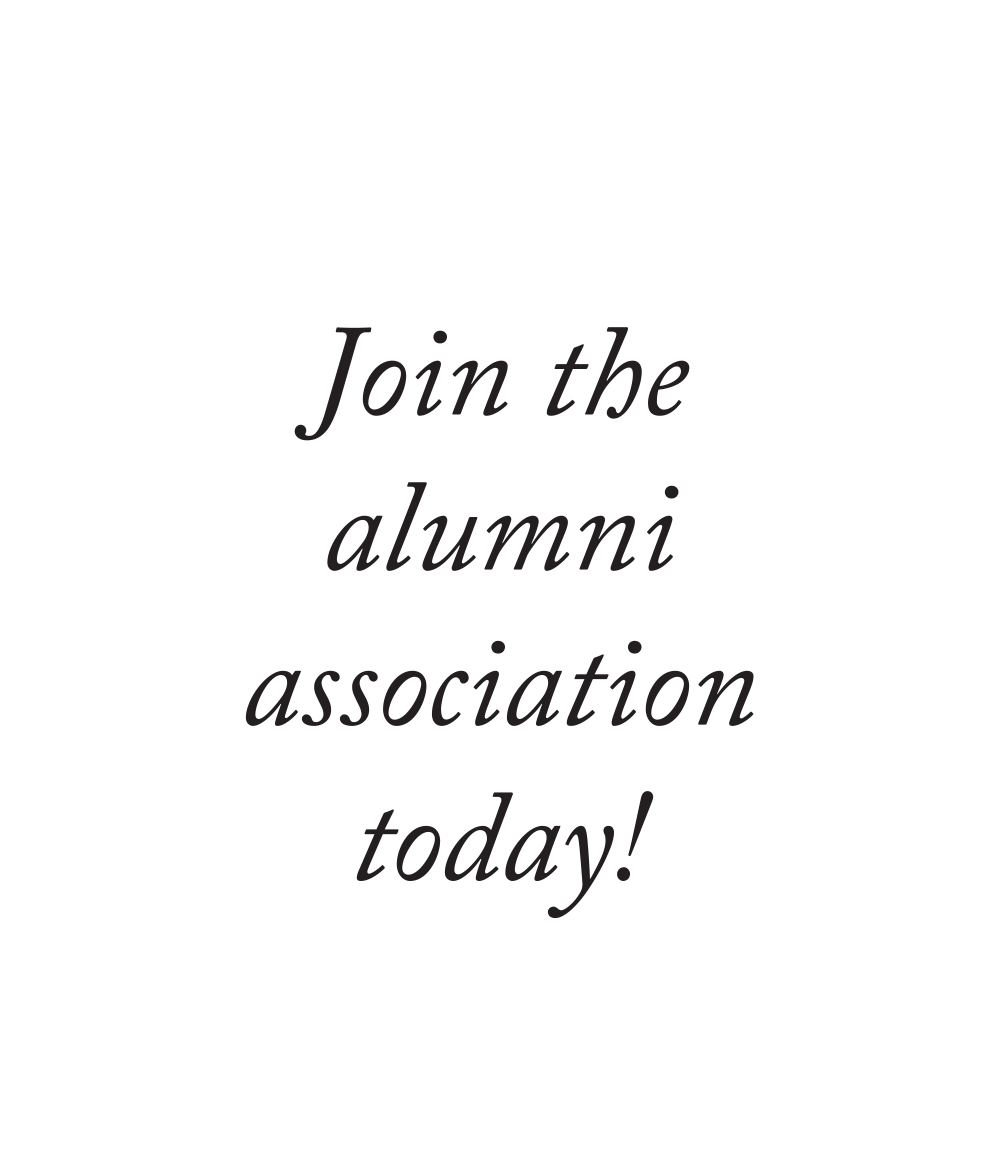

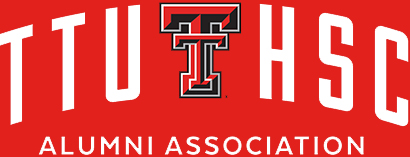
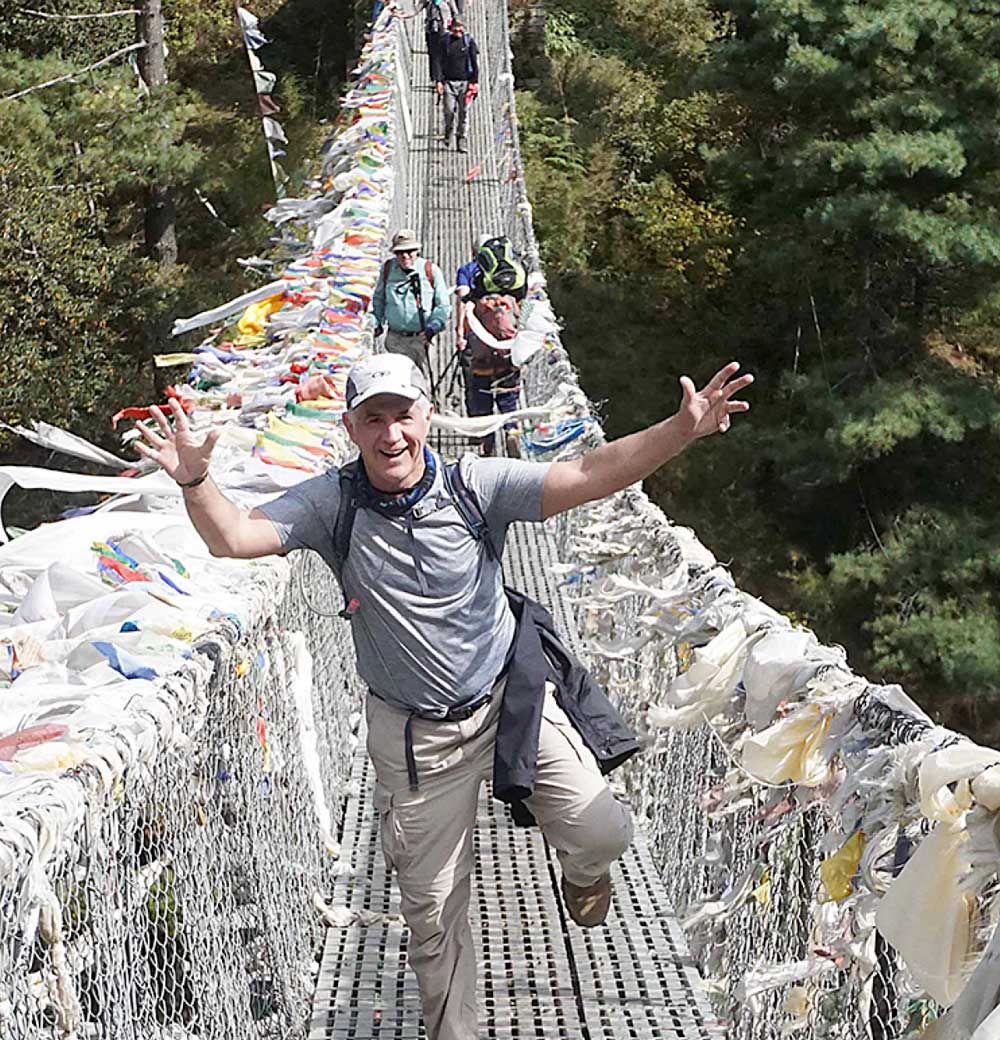






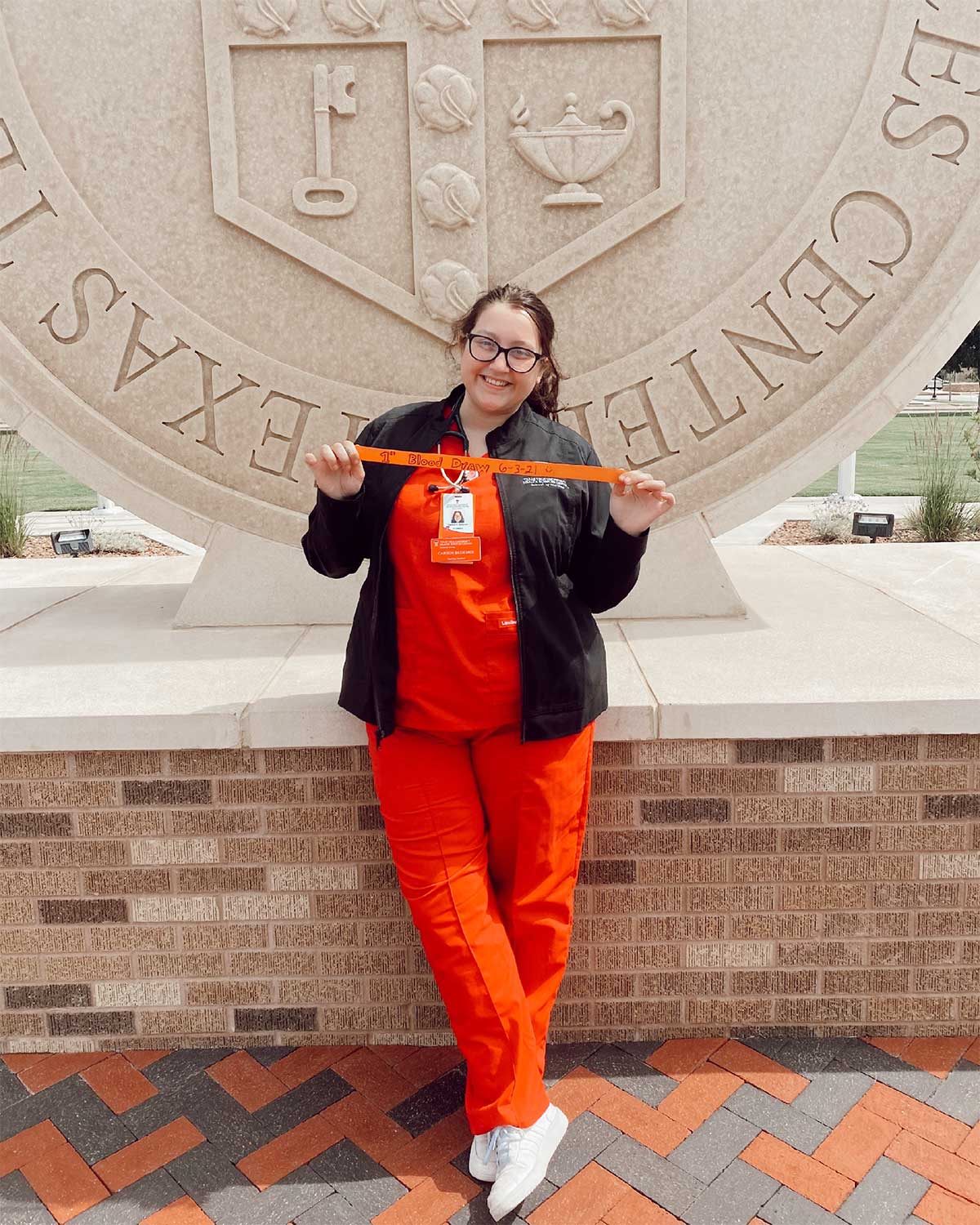
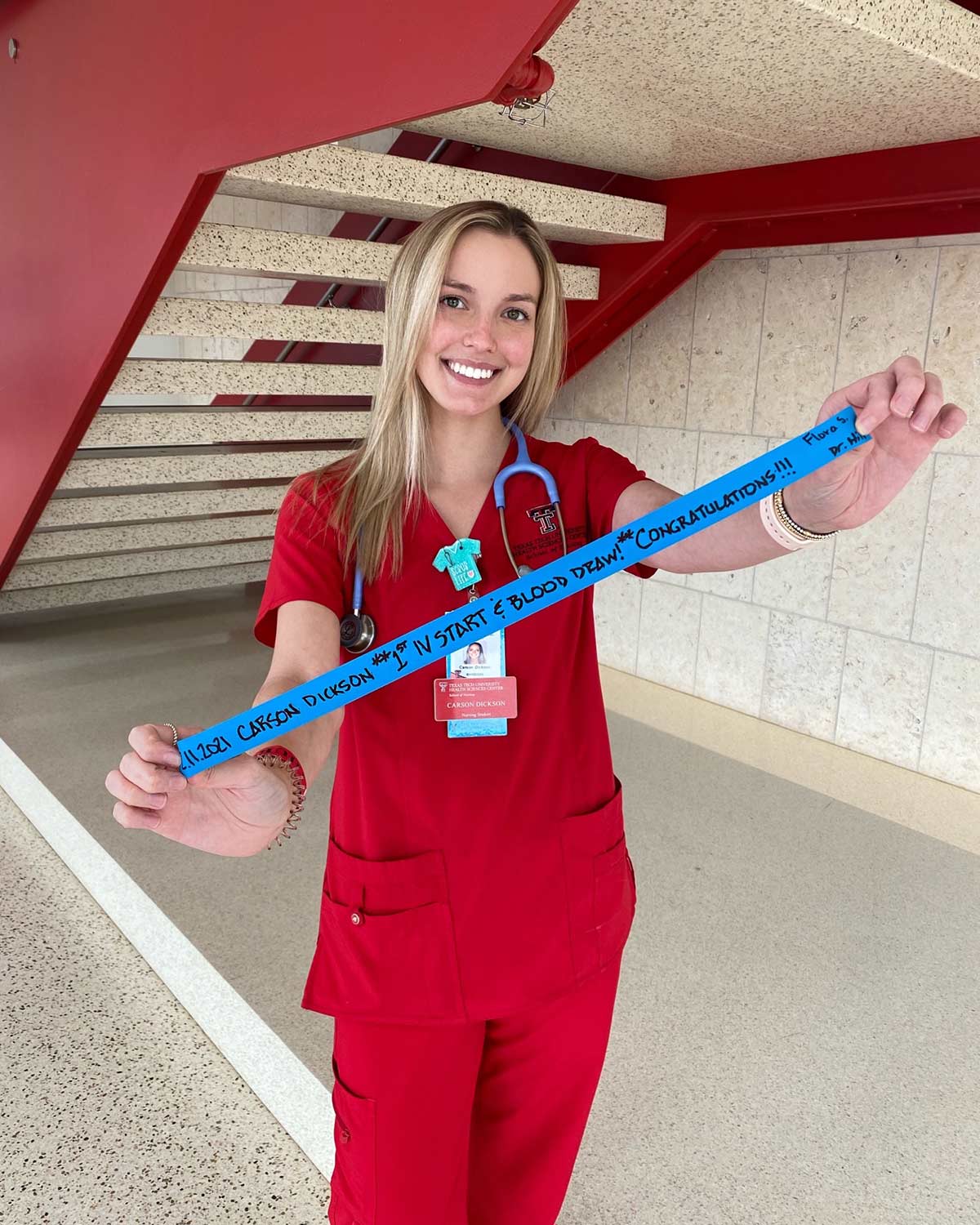
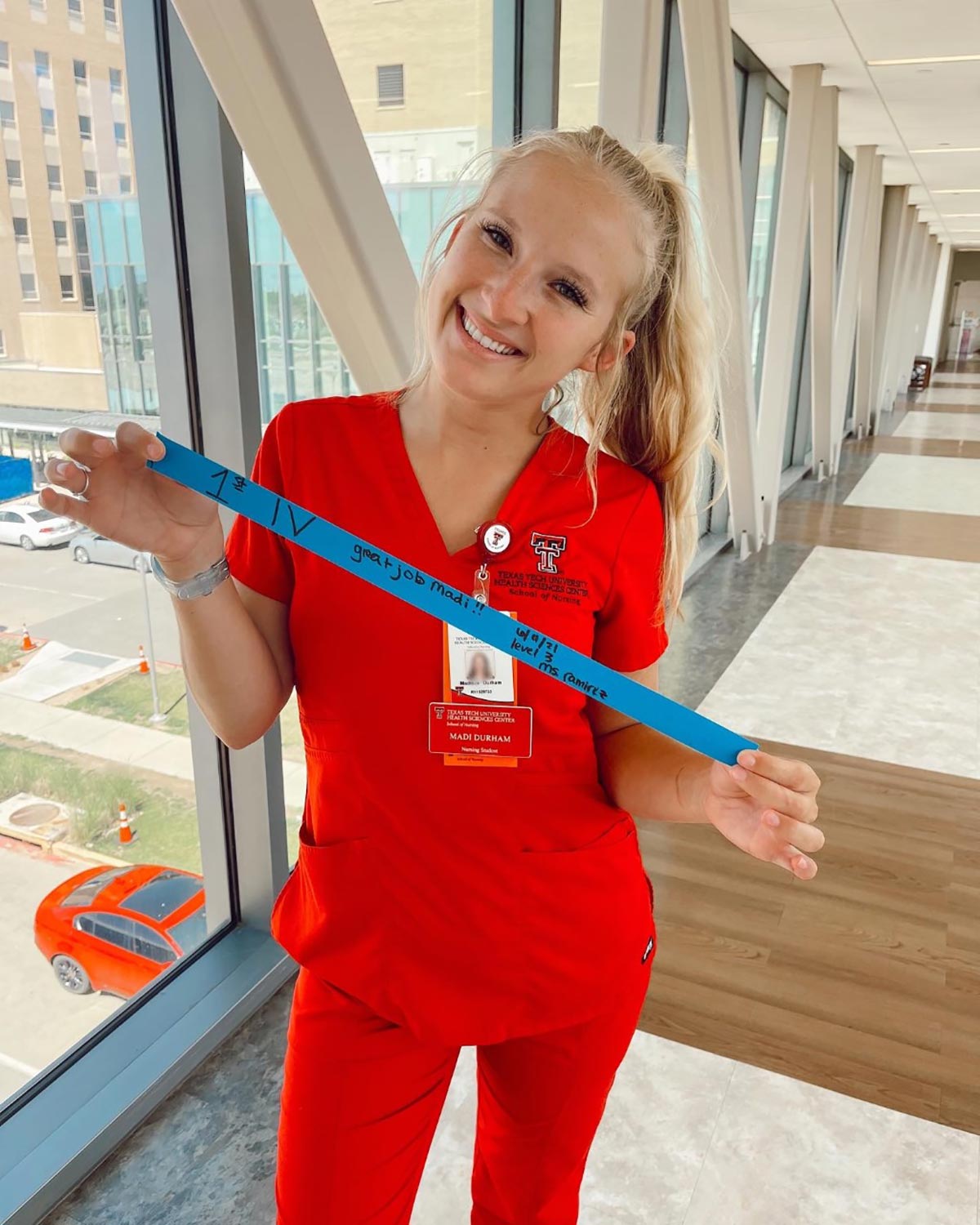
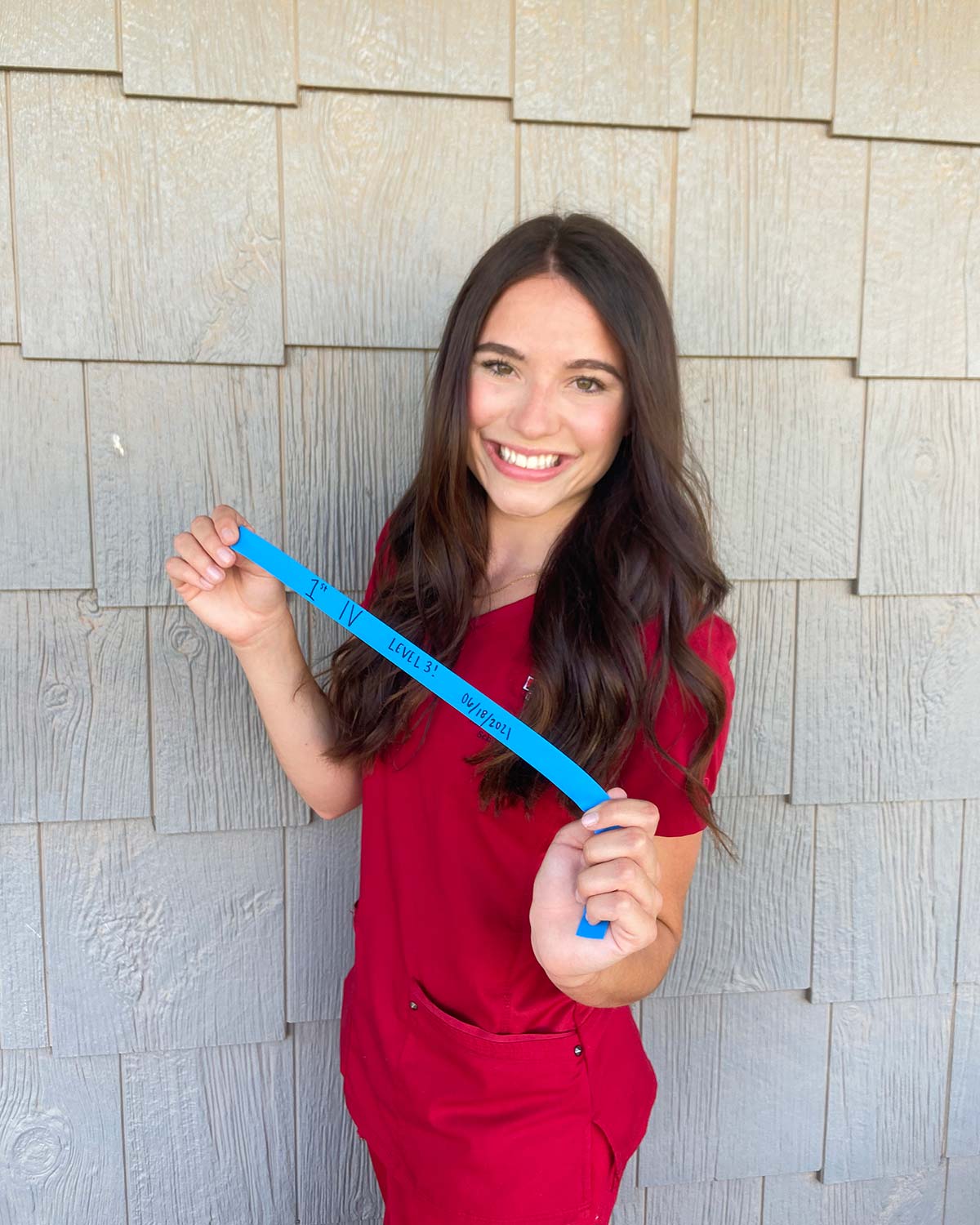
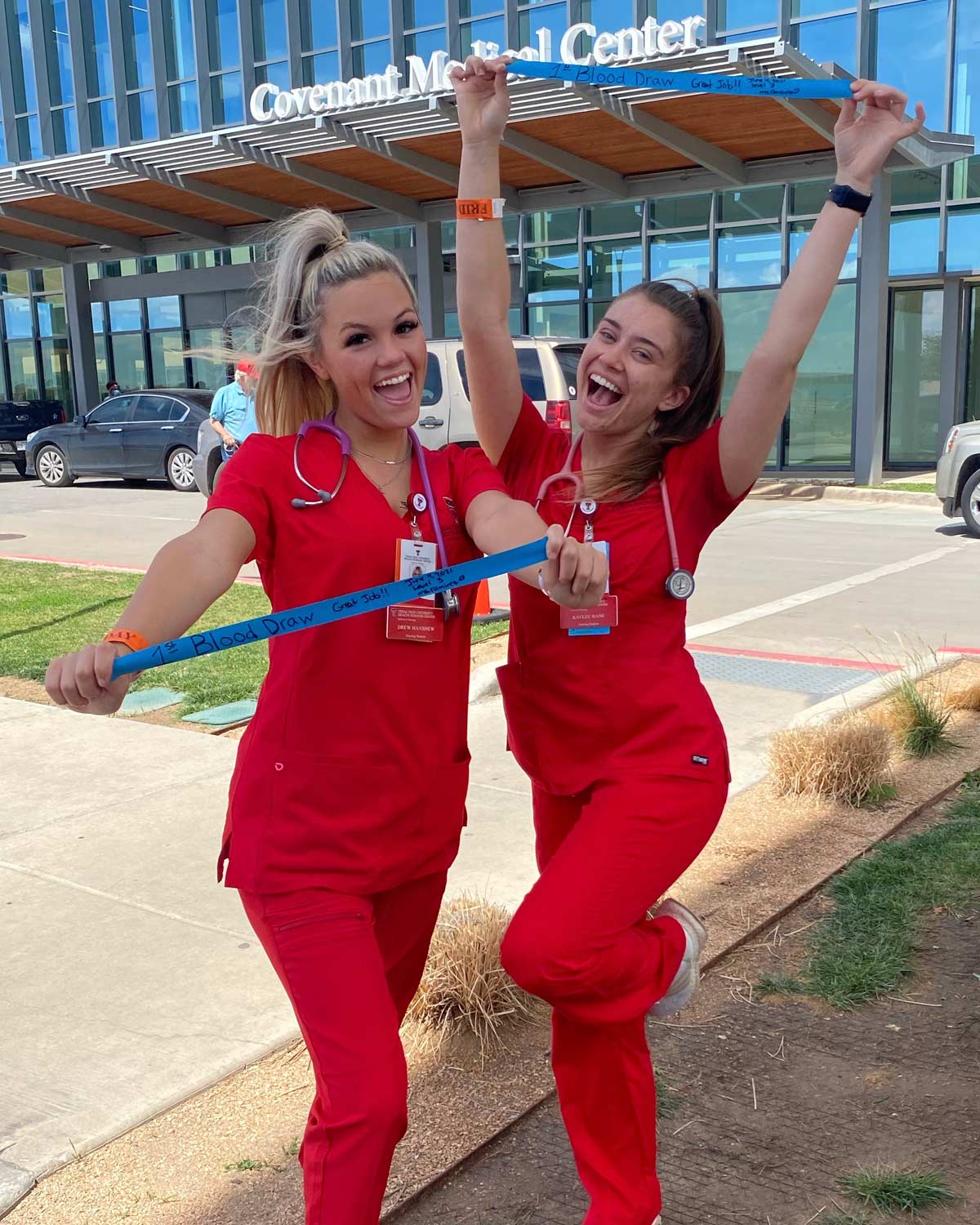
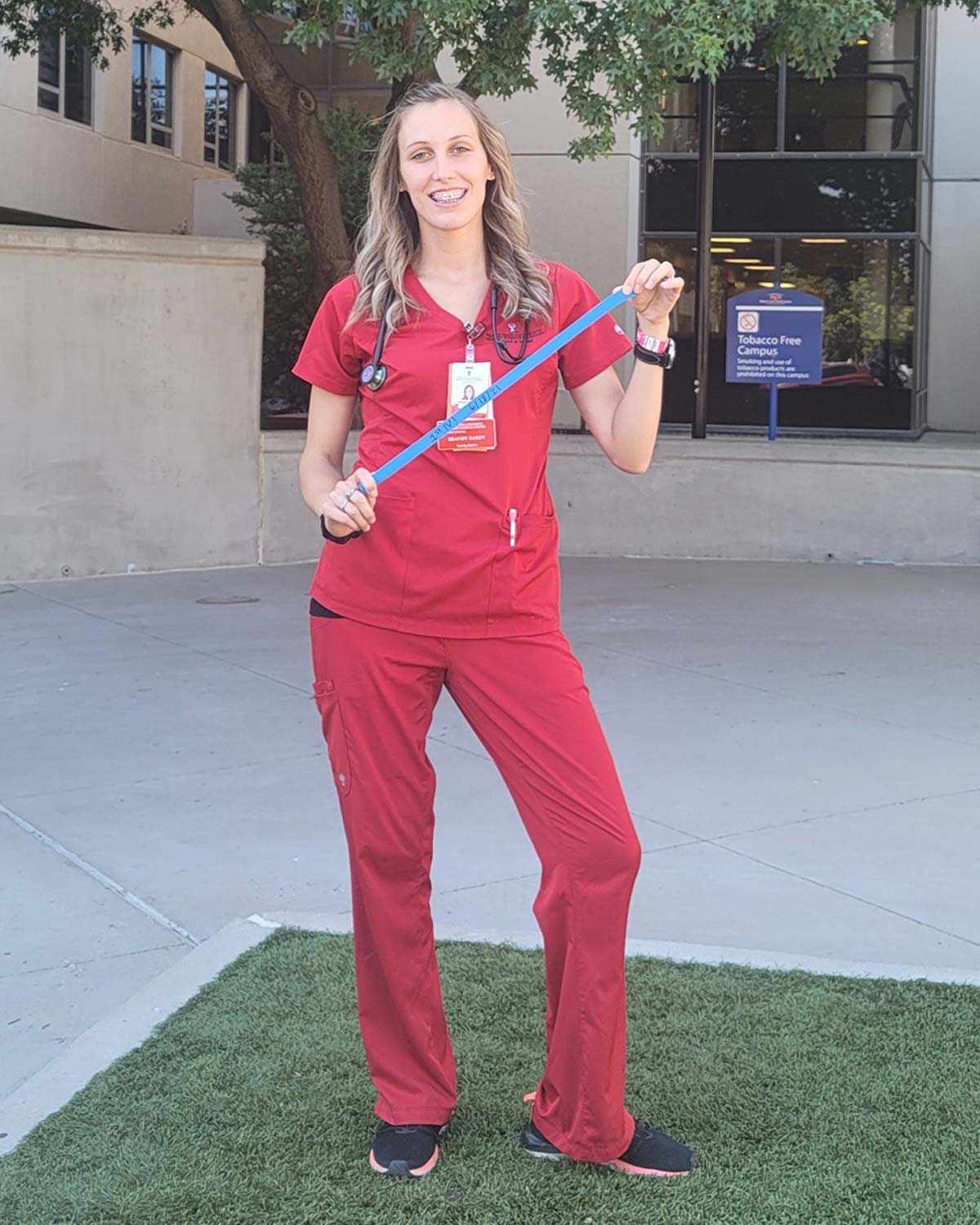
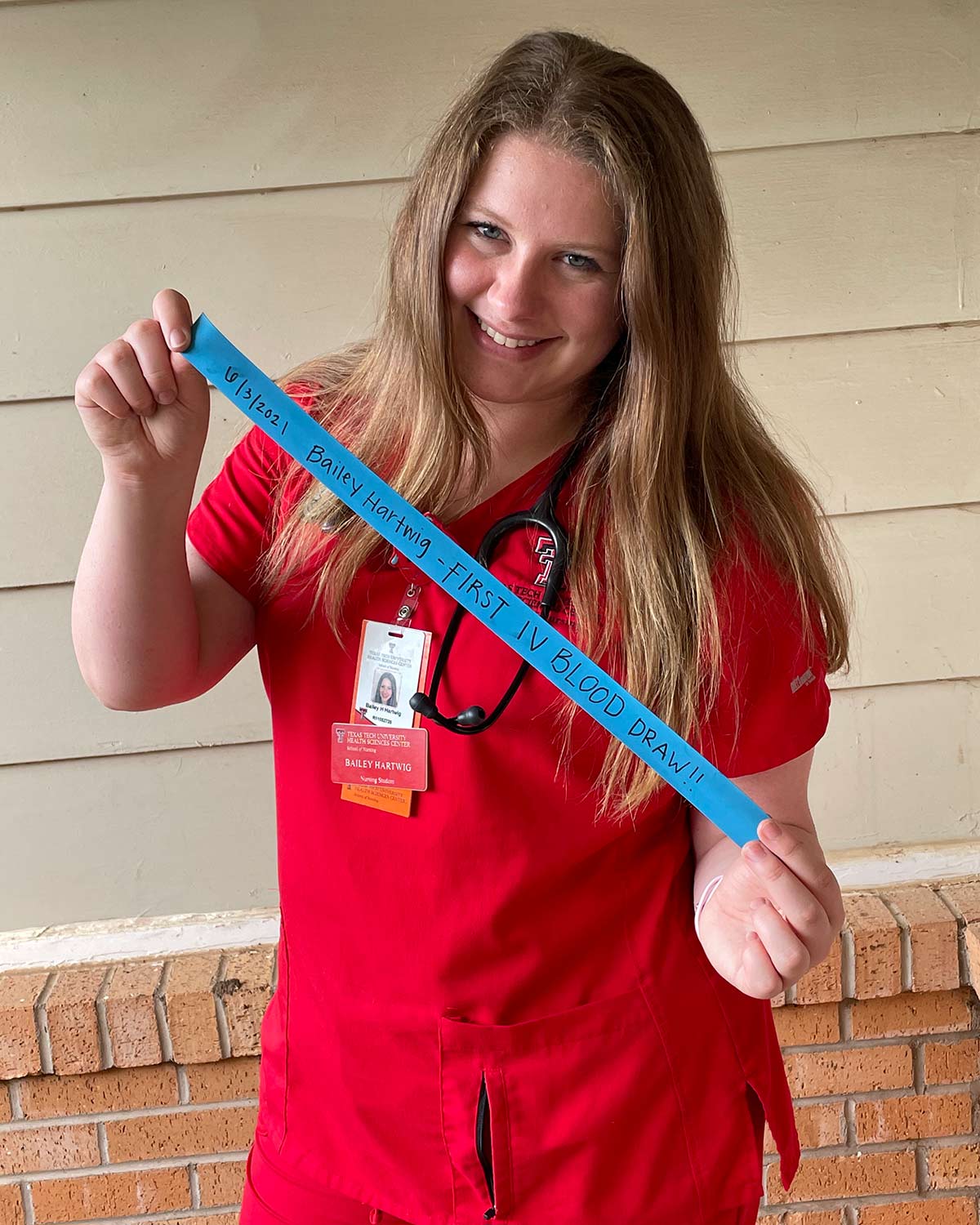
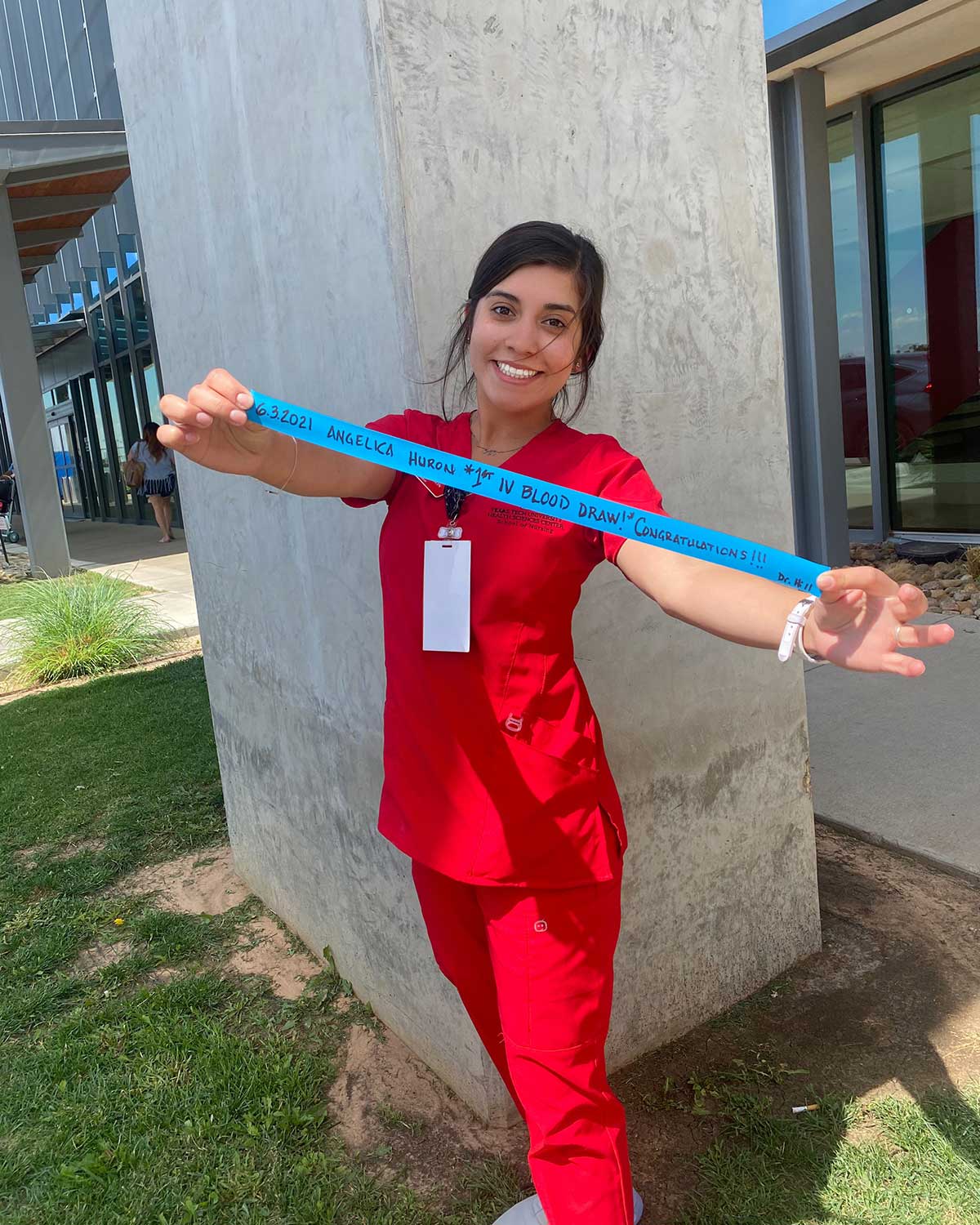
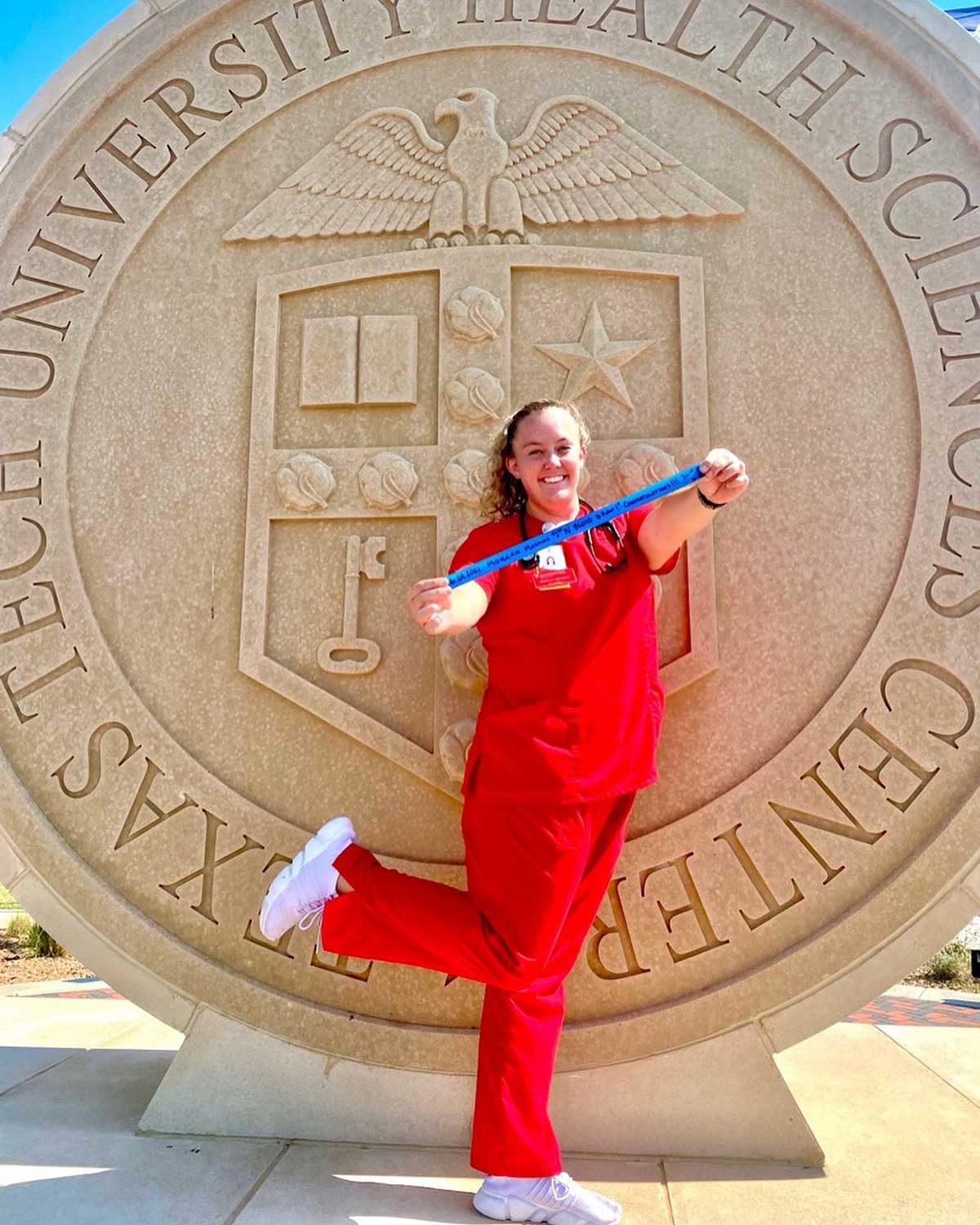
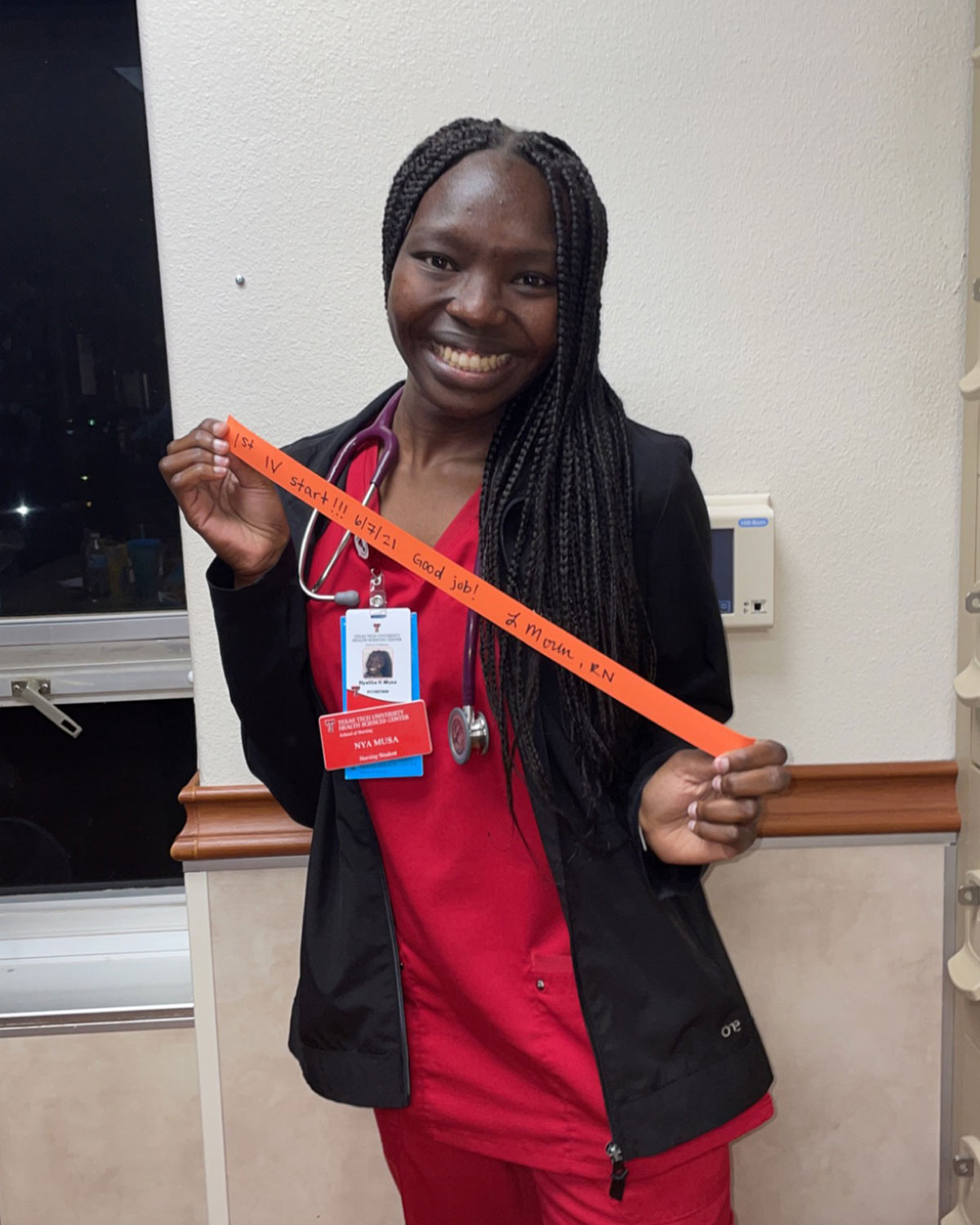
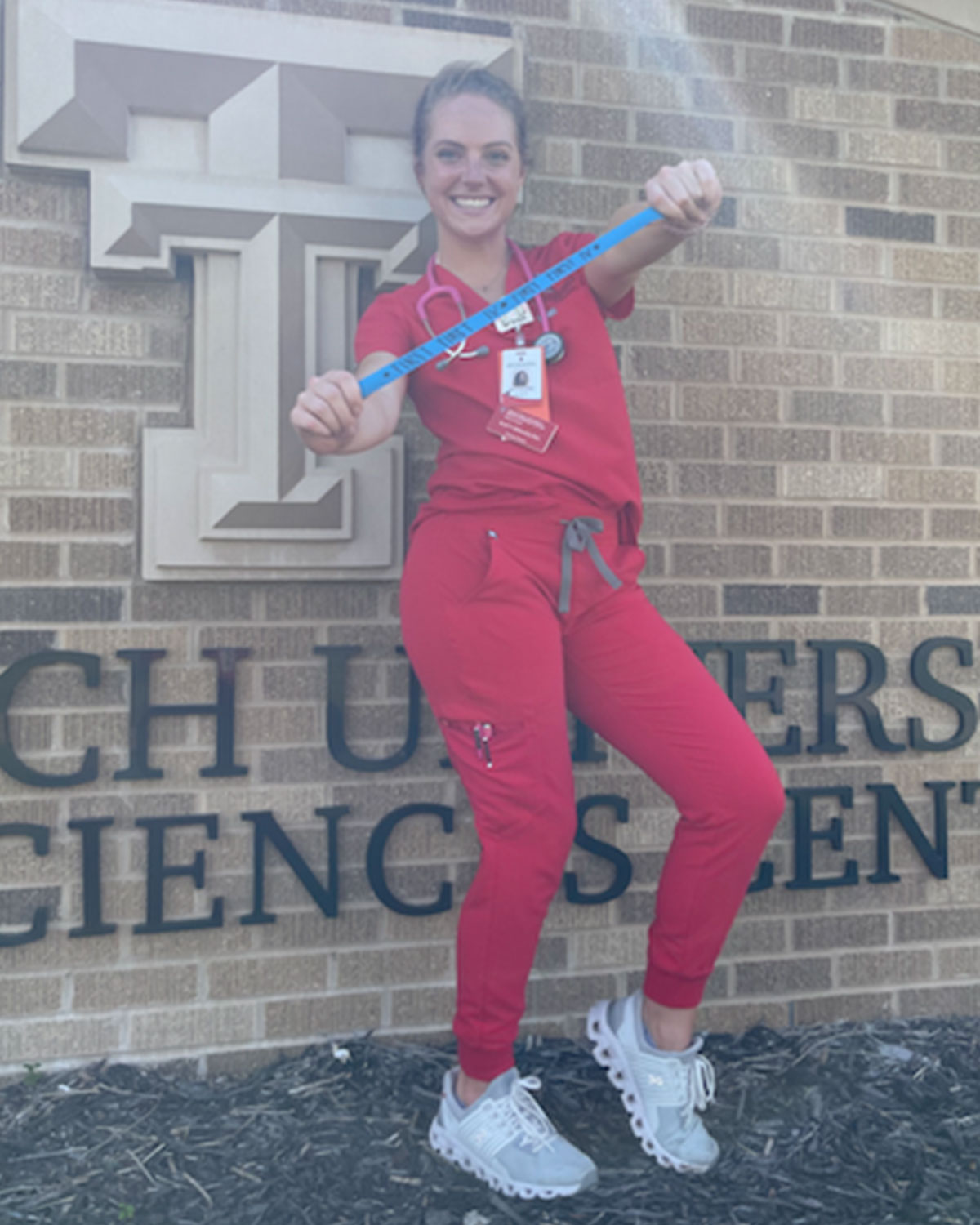
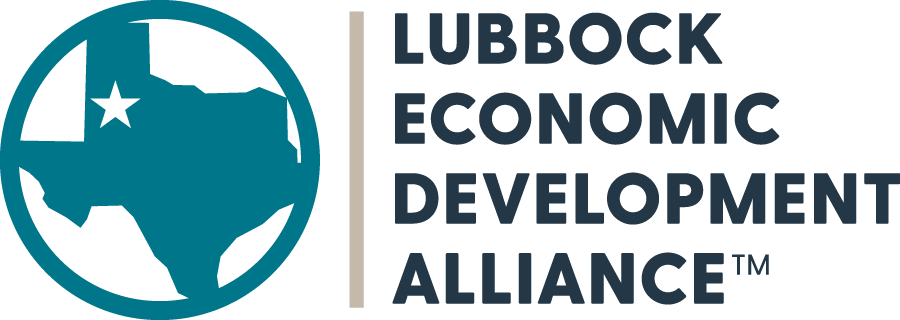








 TTUHSC University Center
TTUHSC University Center 
